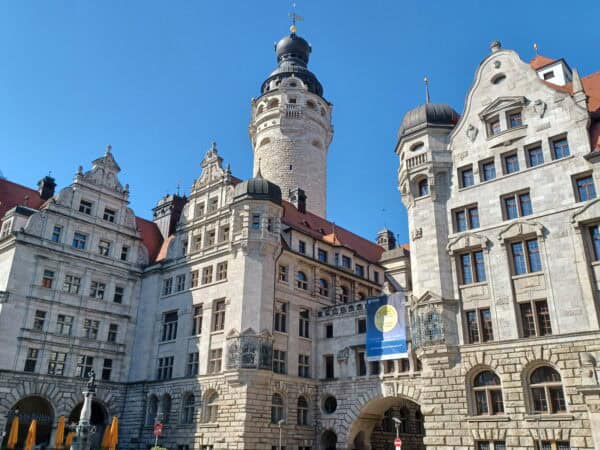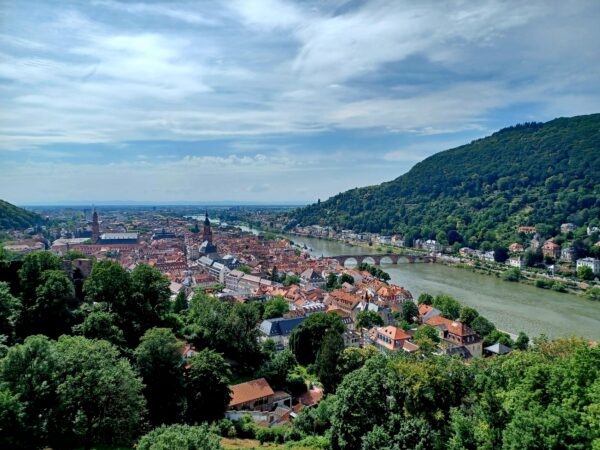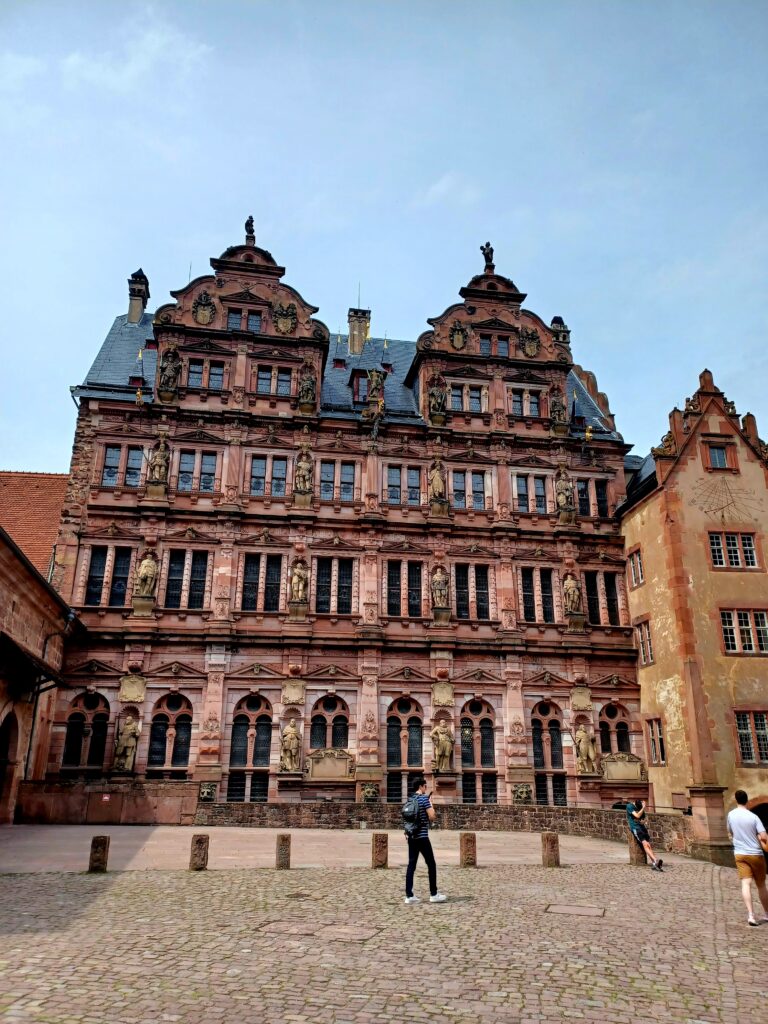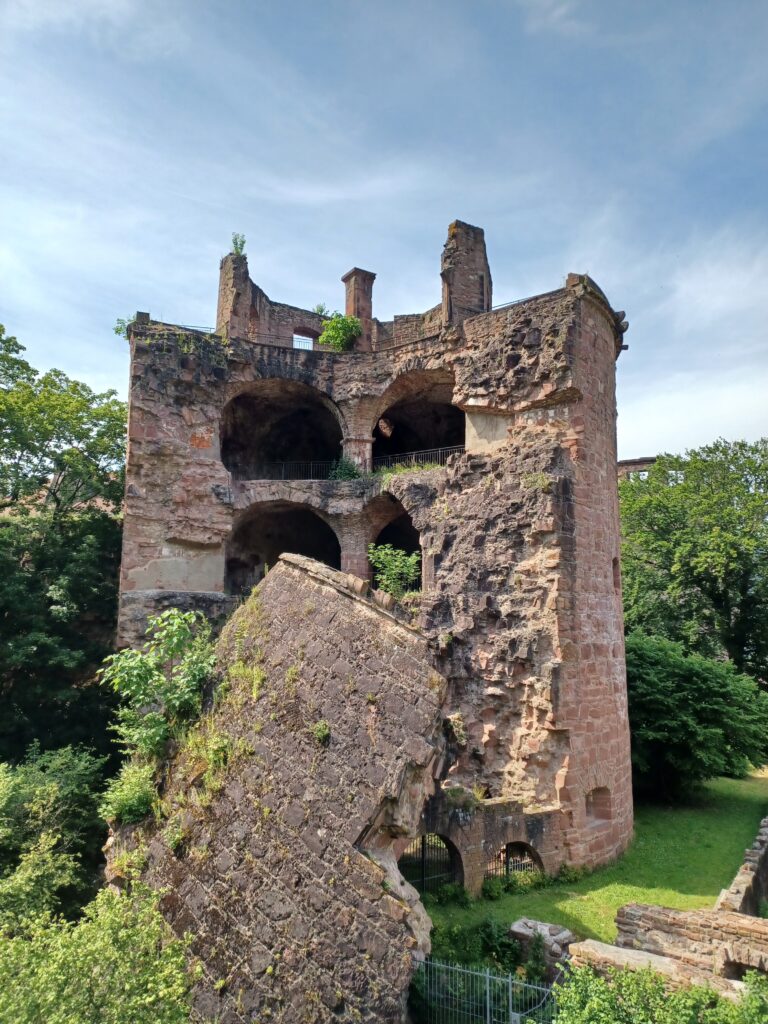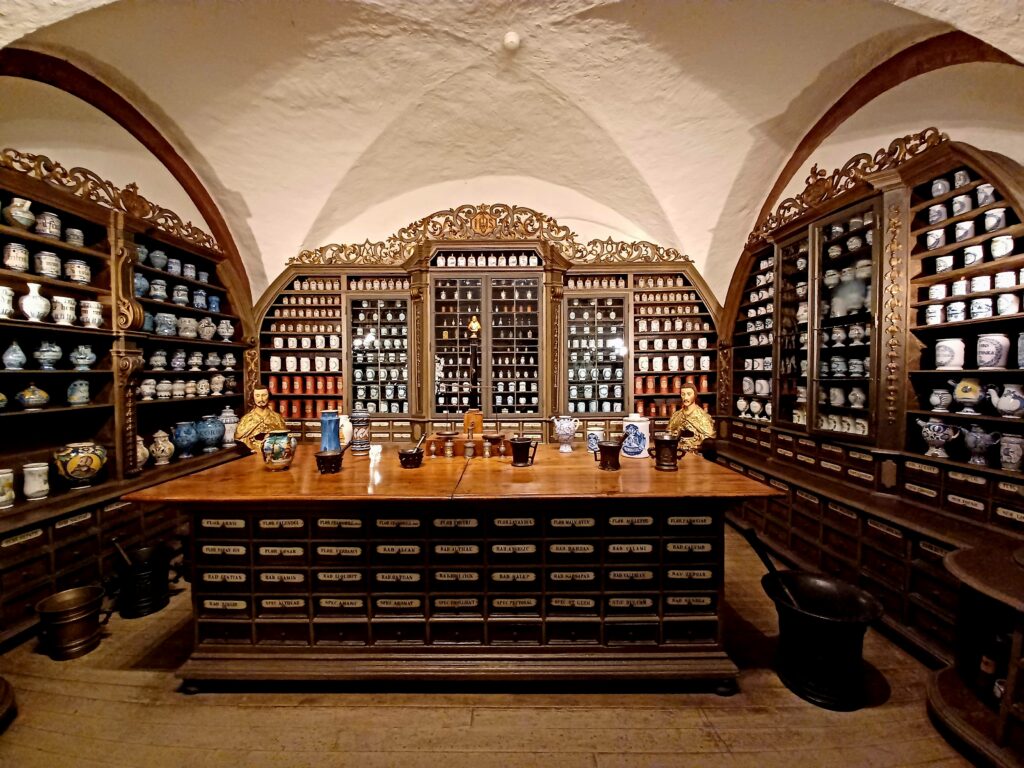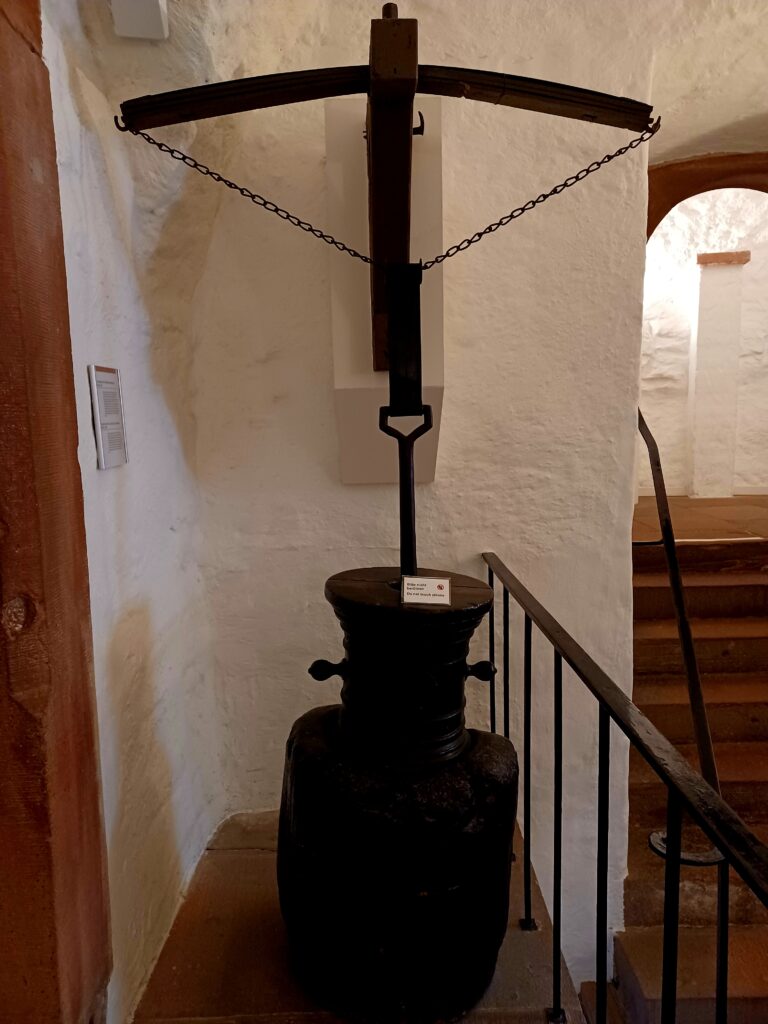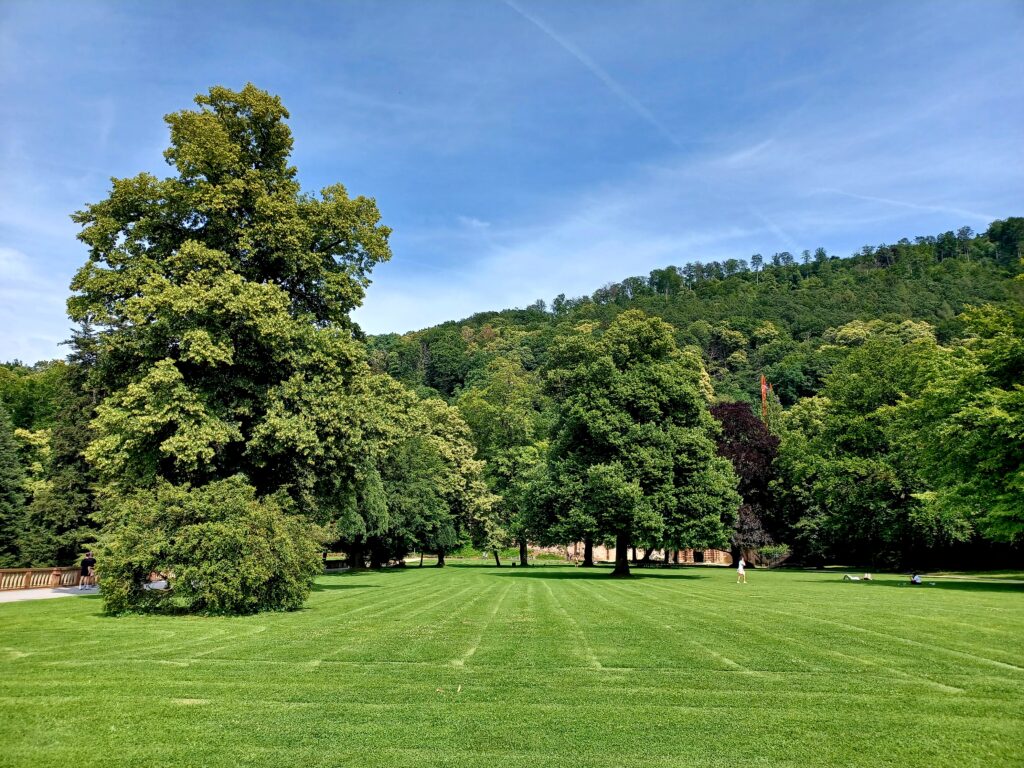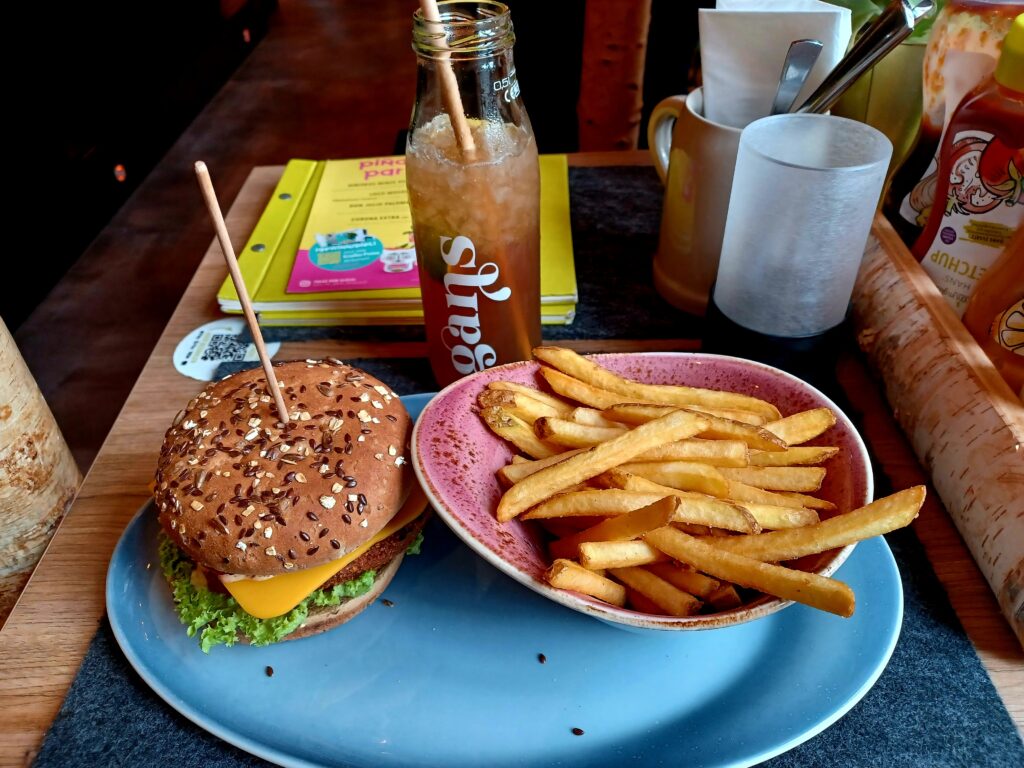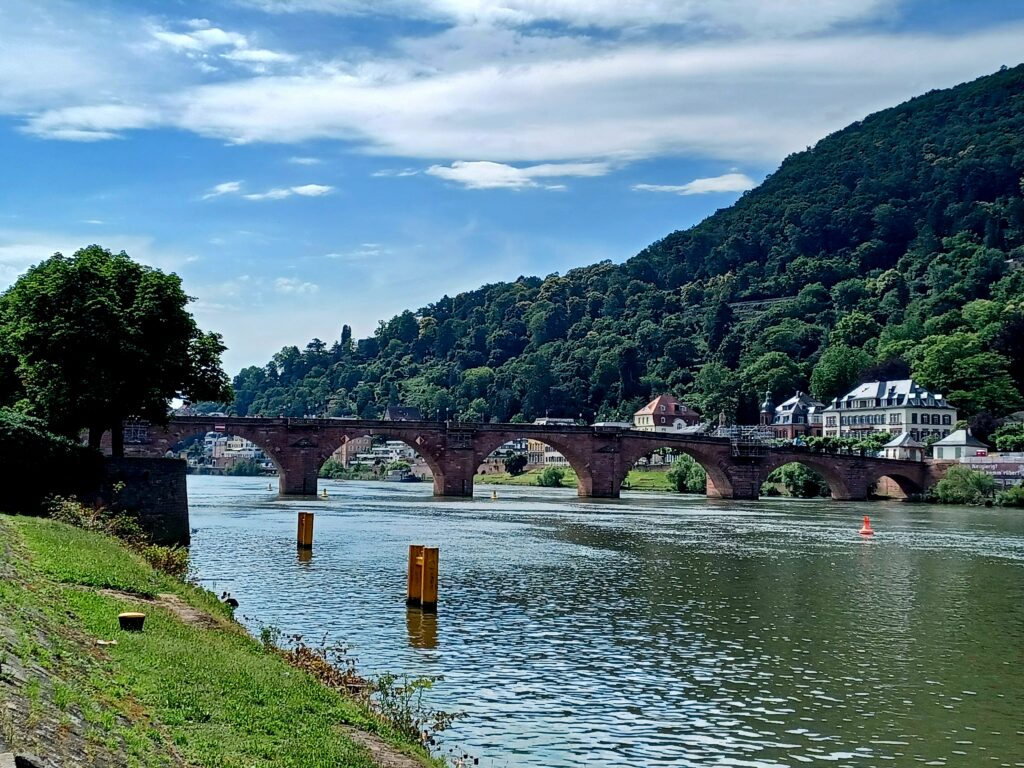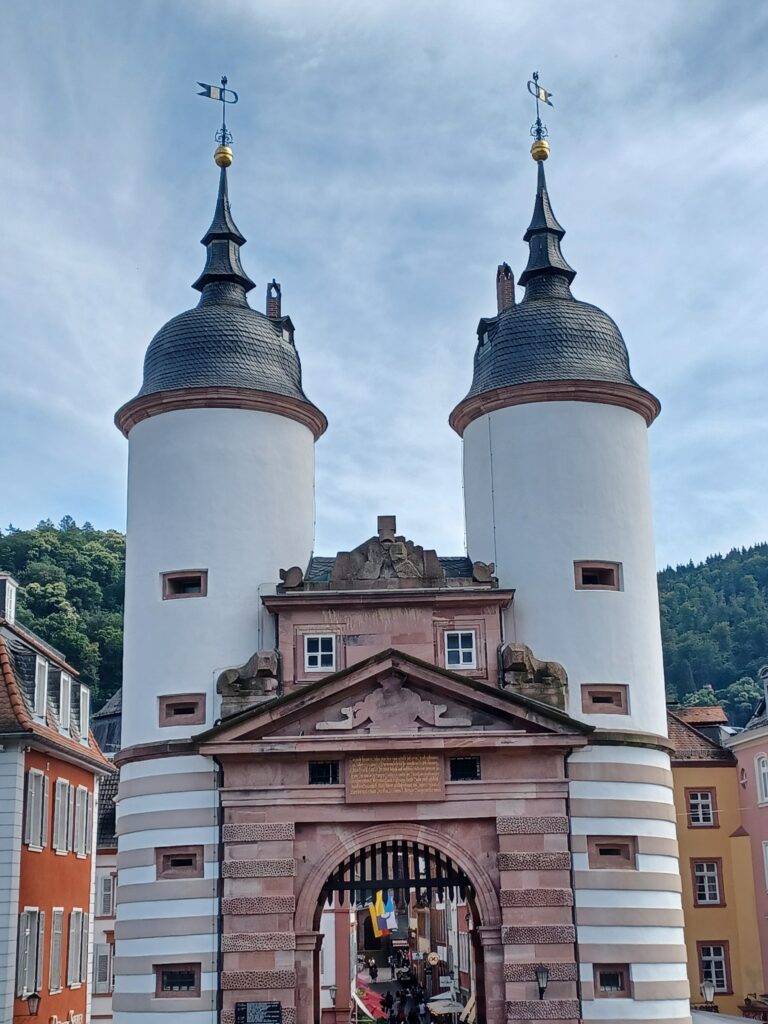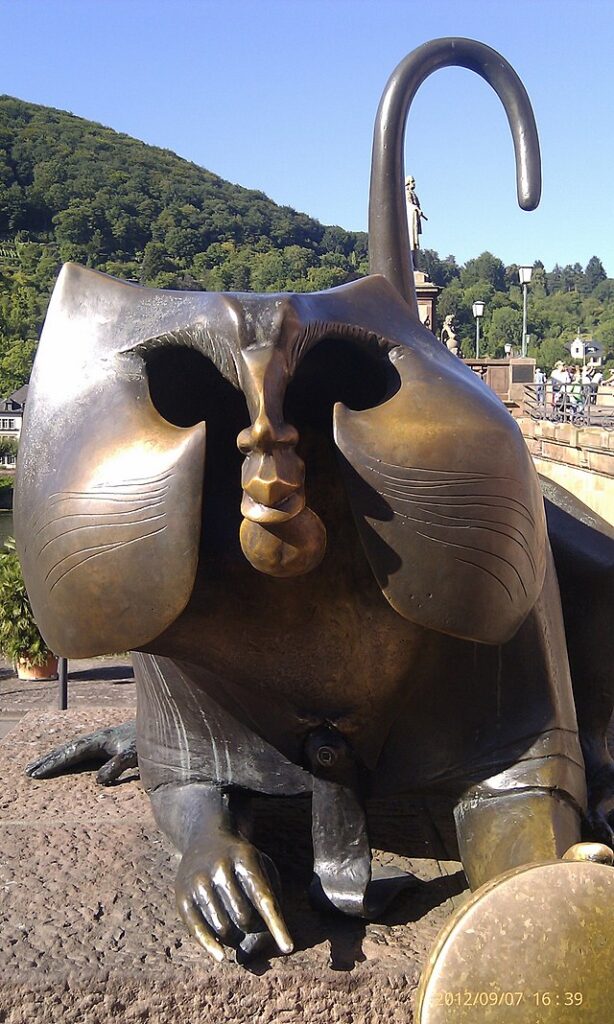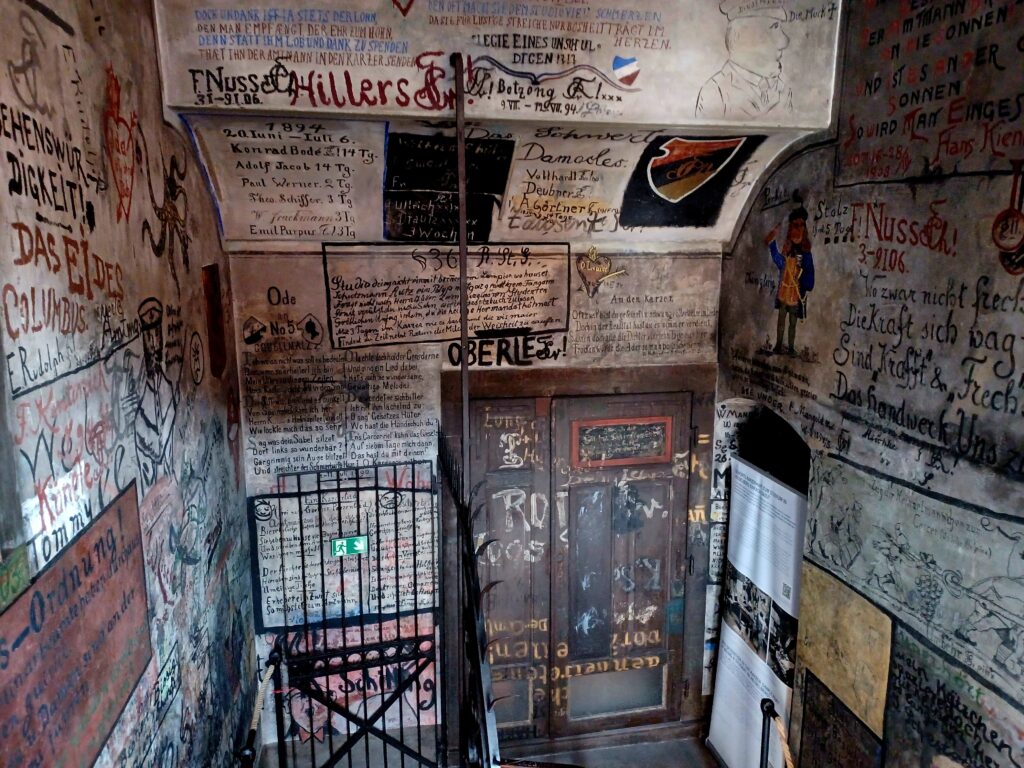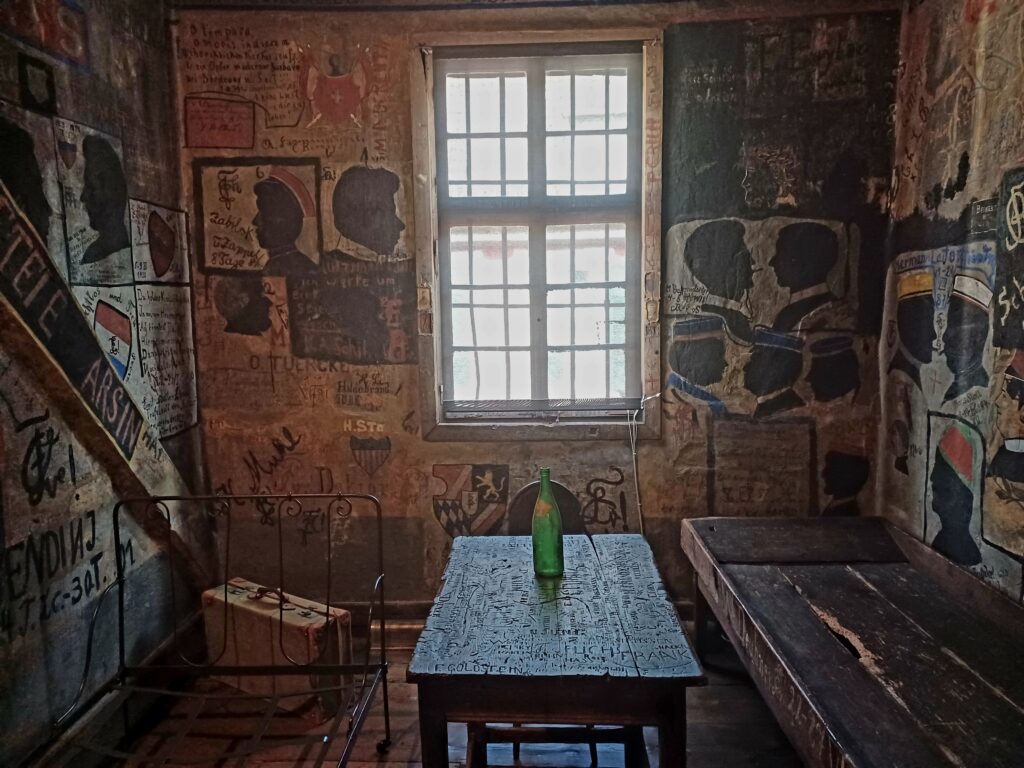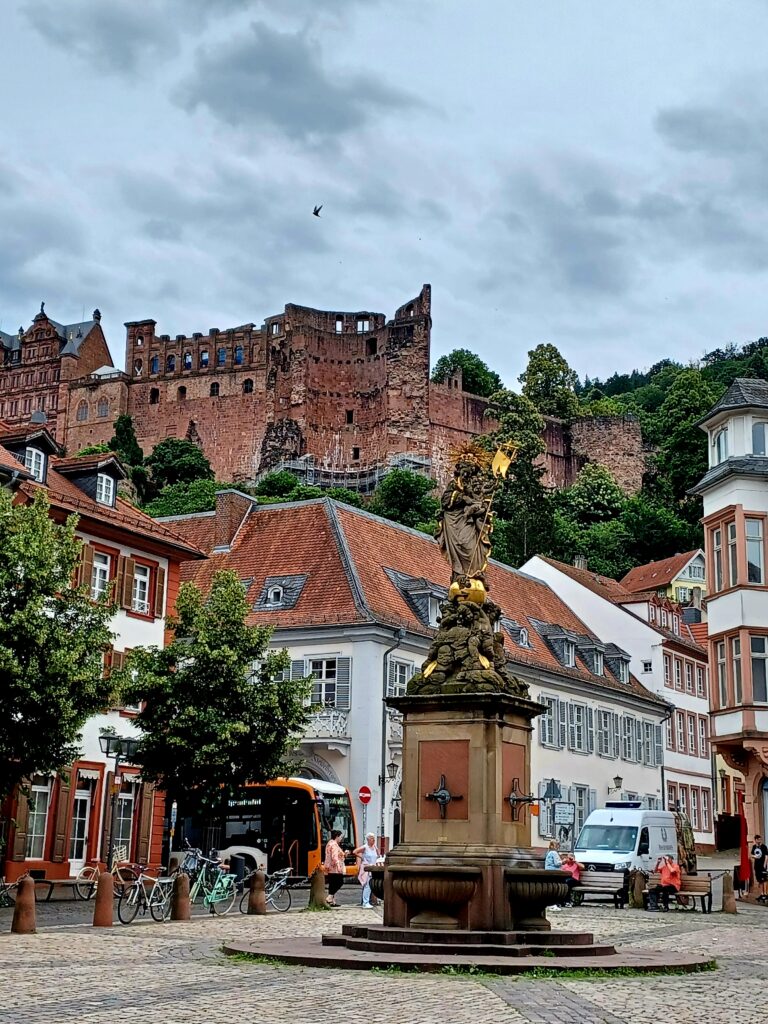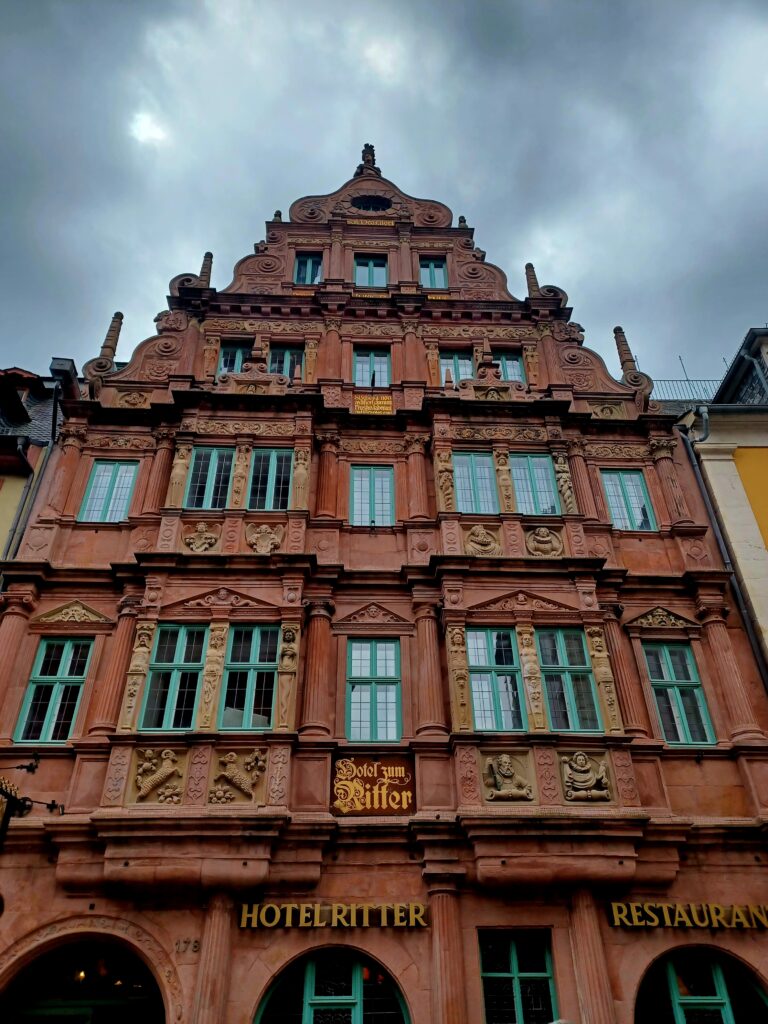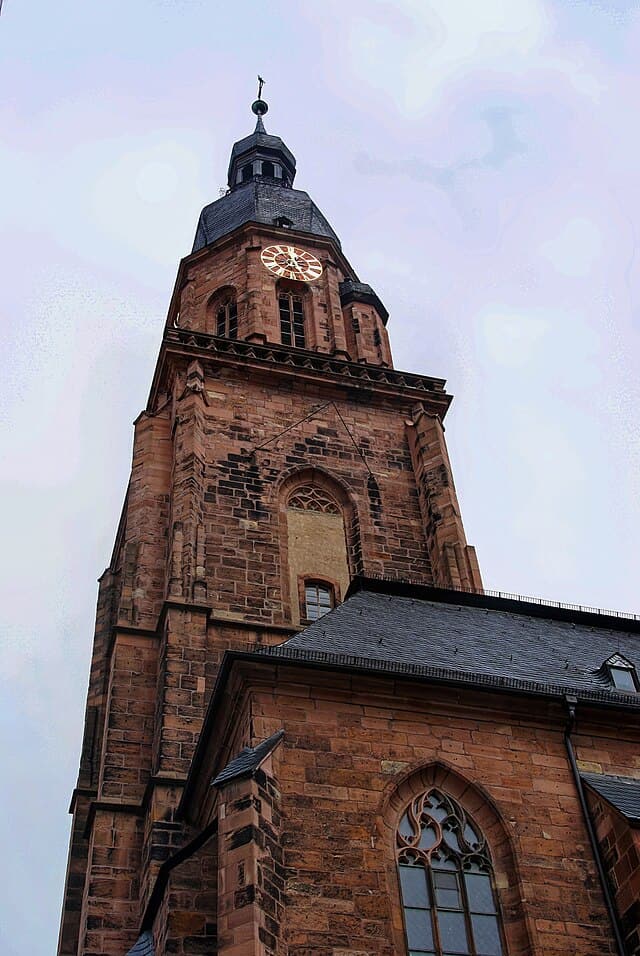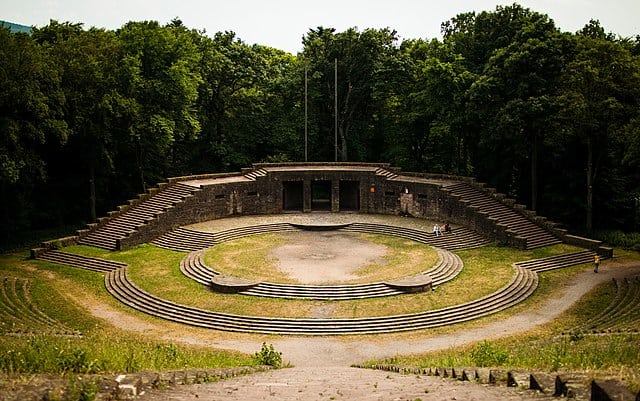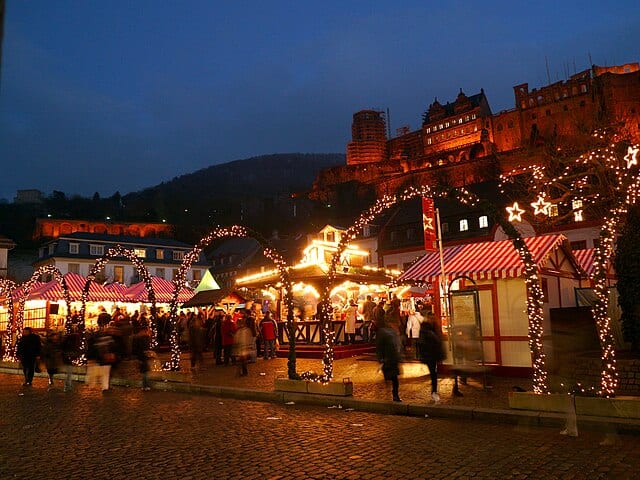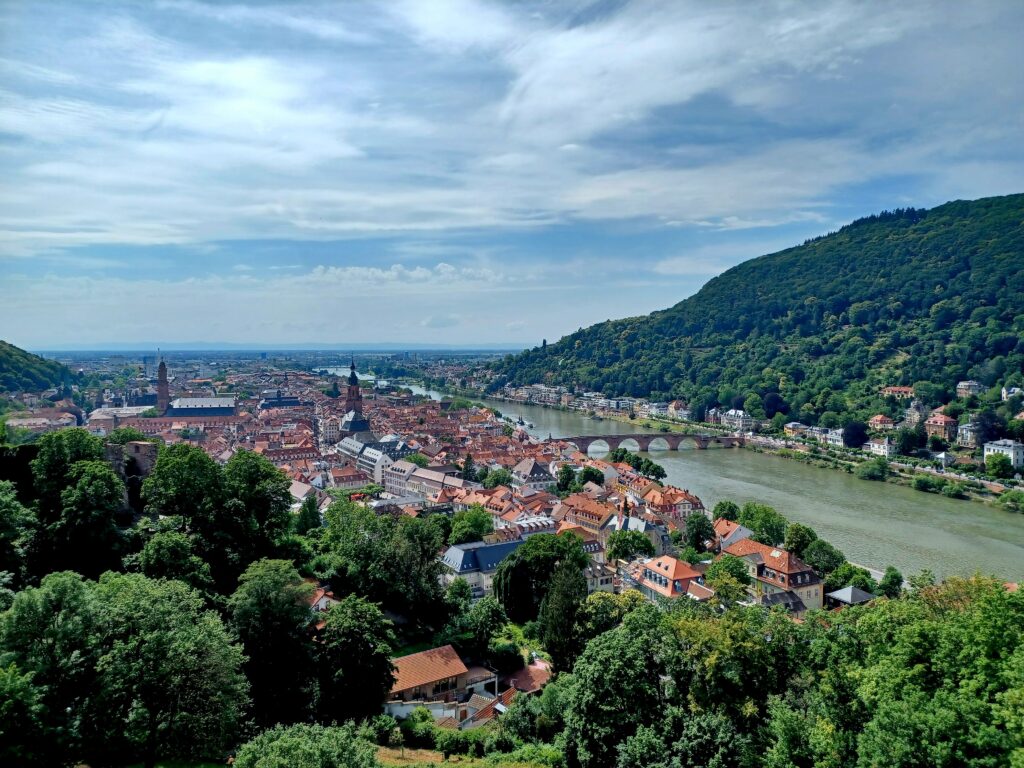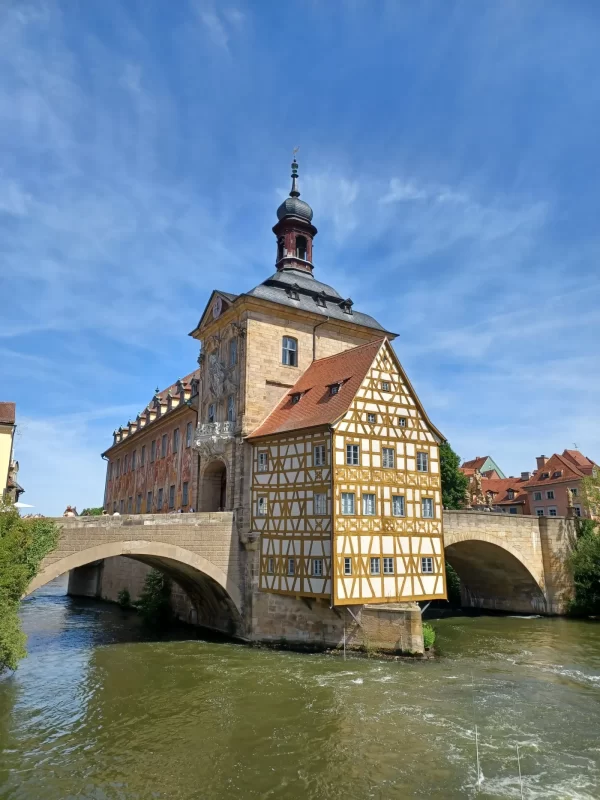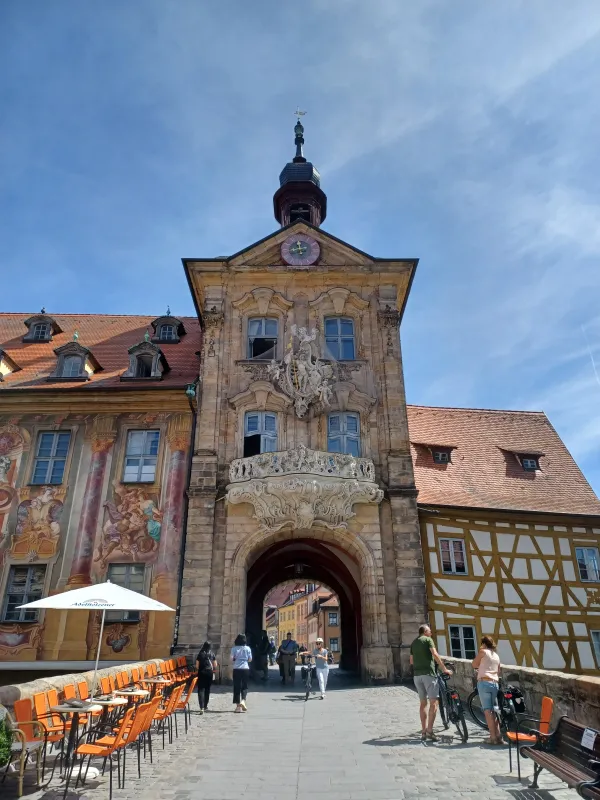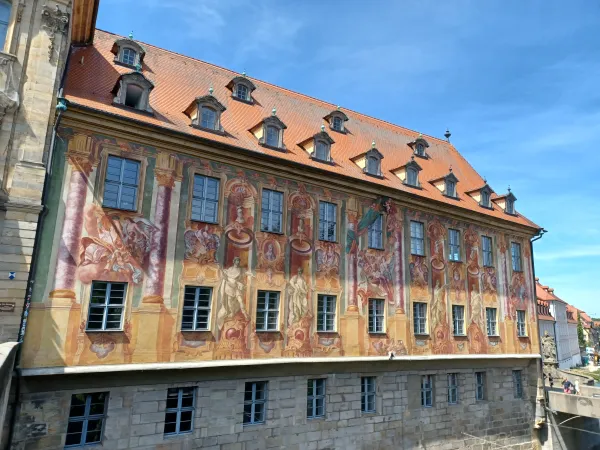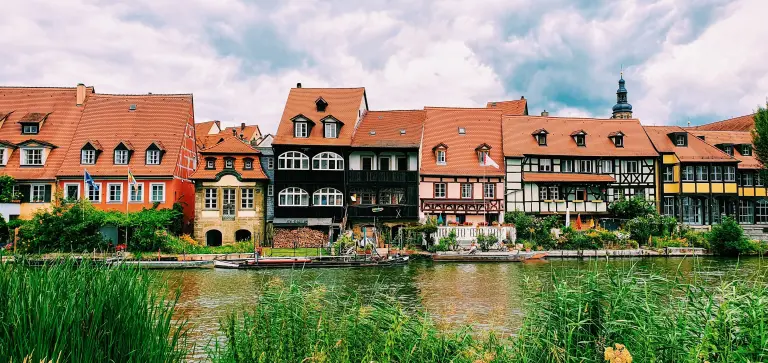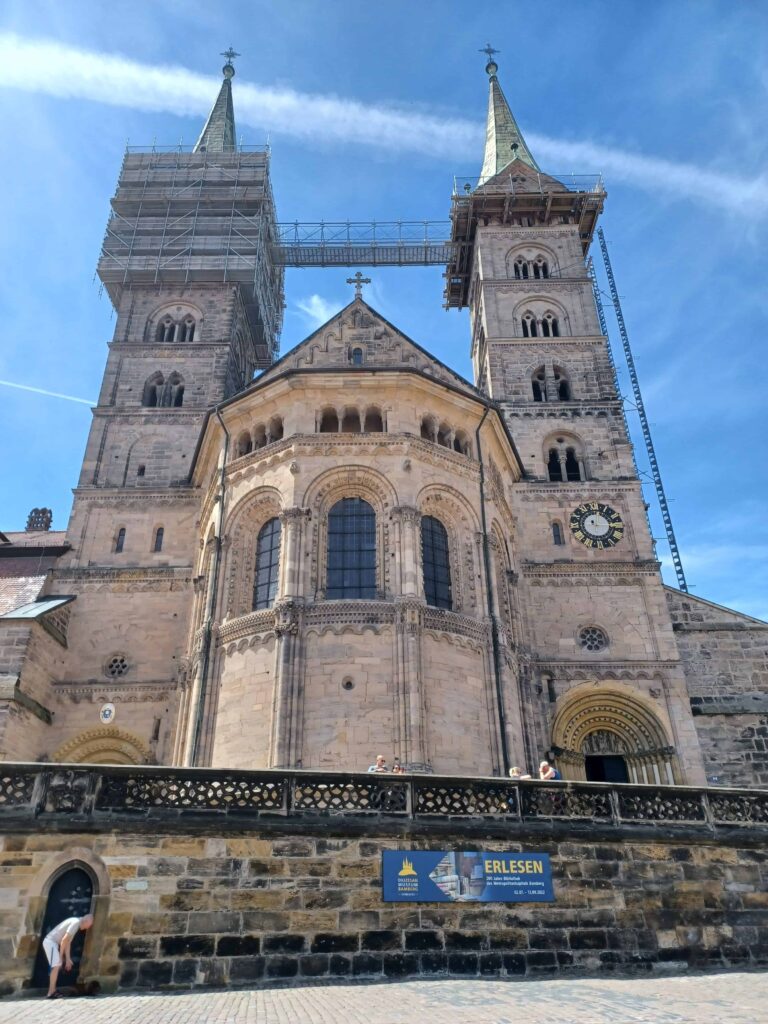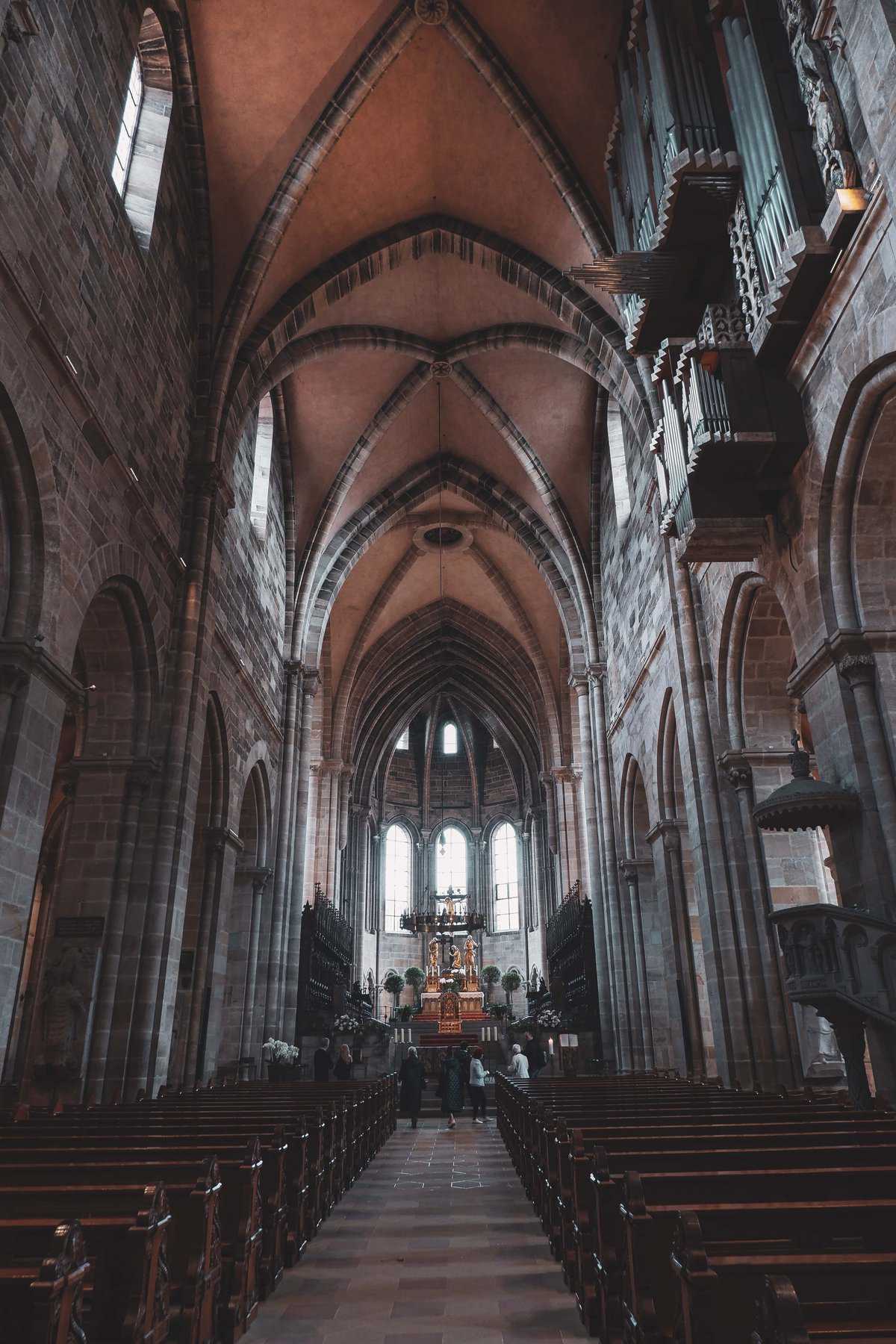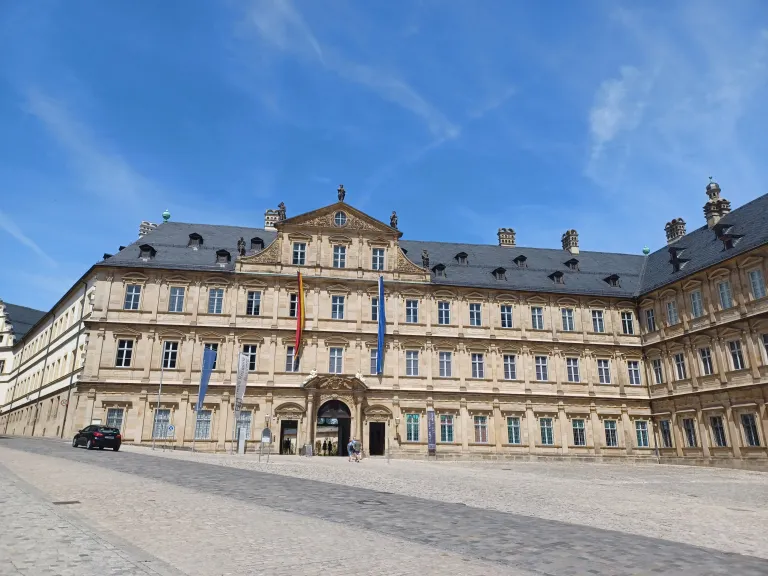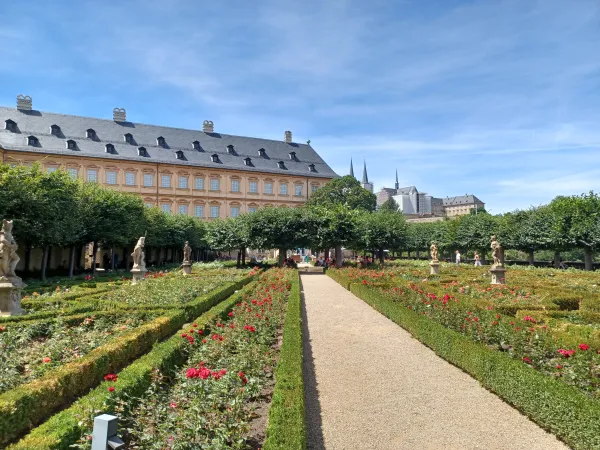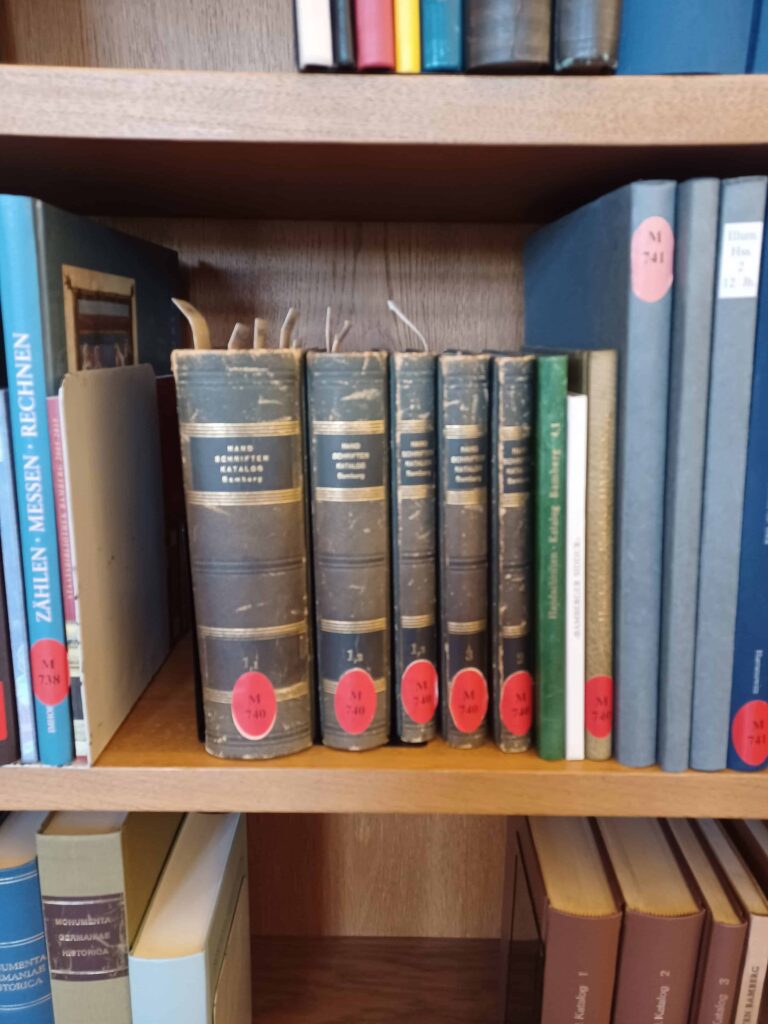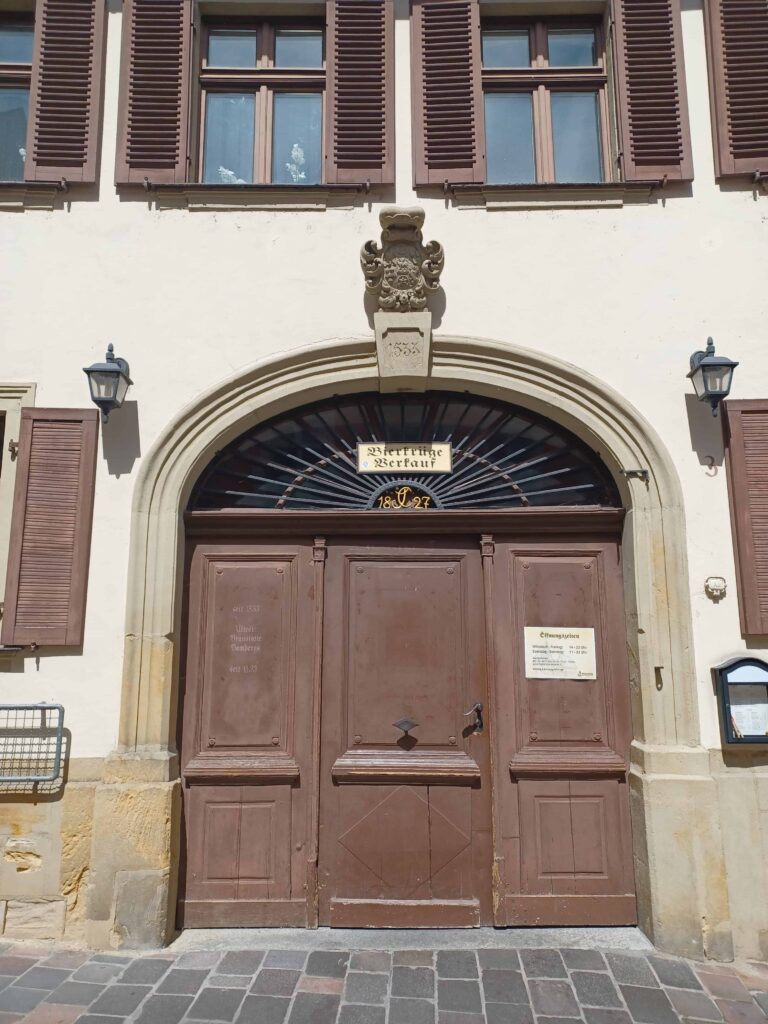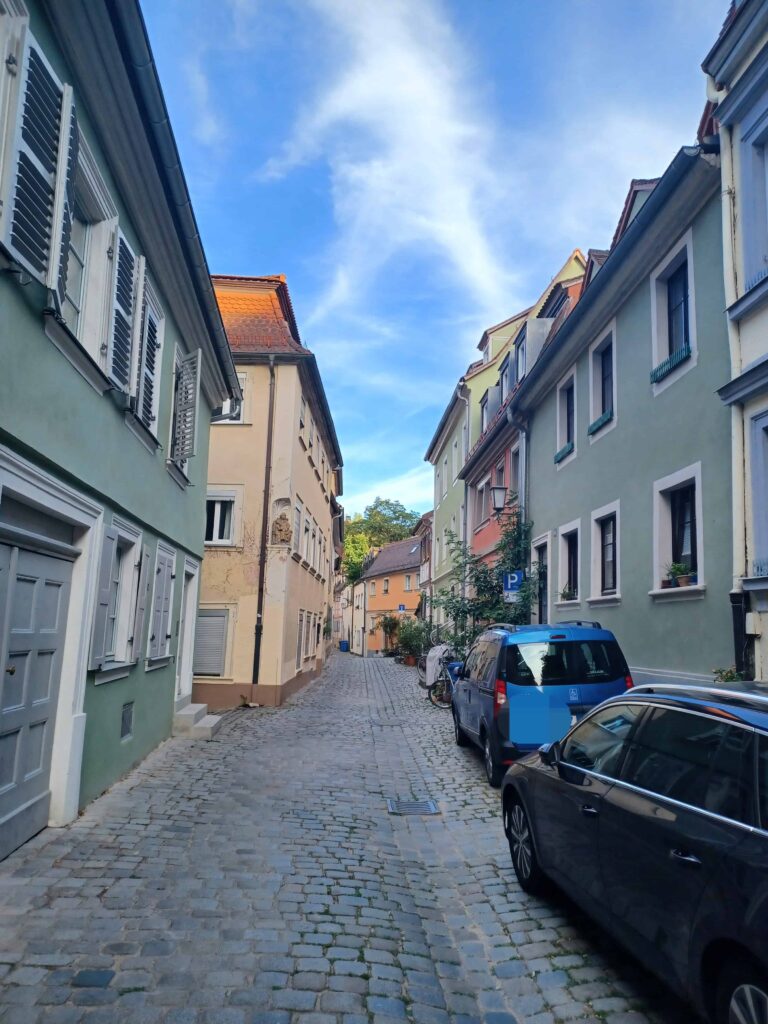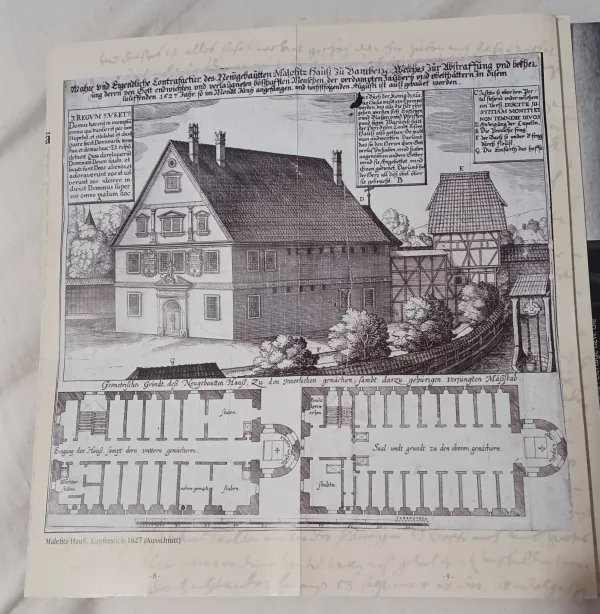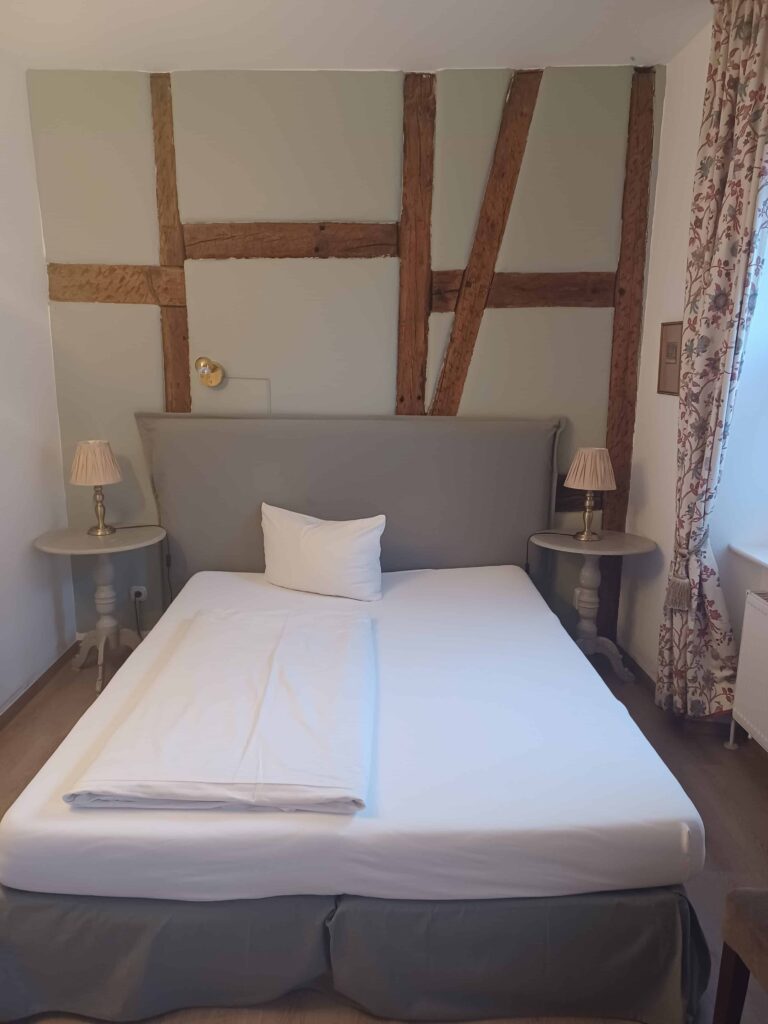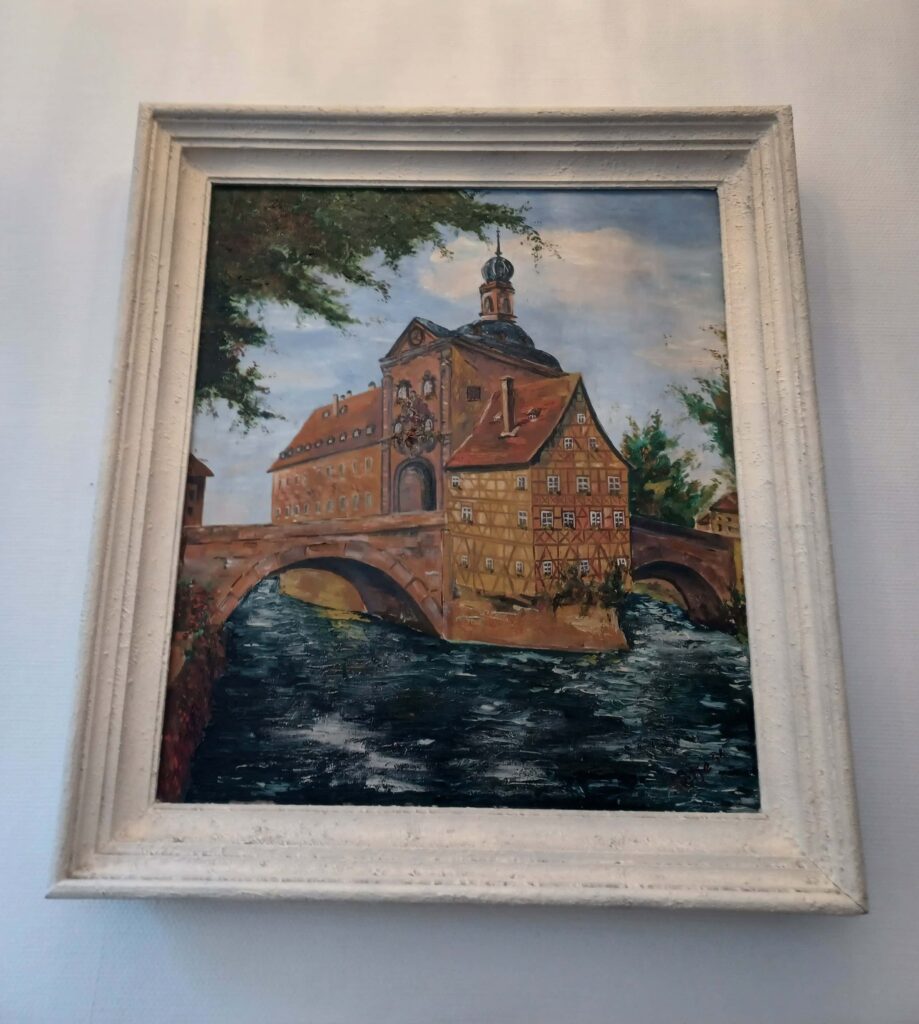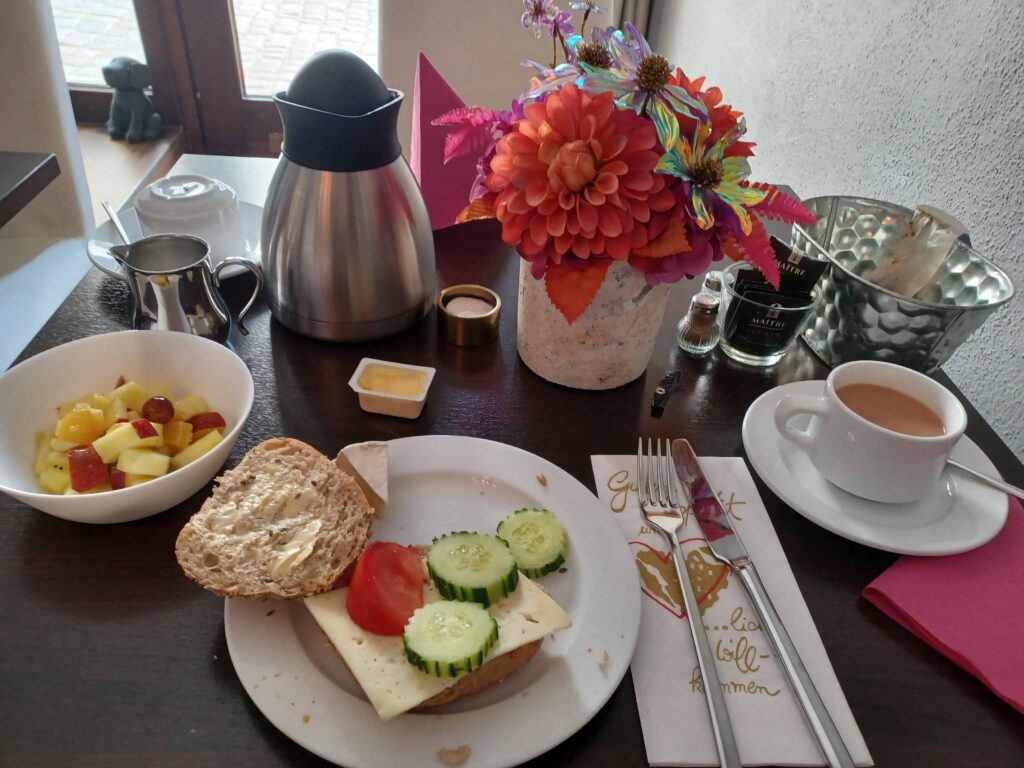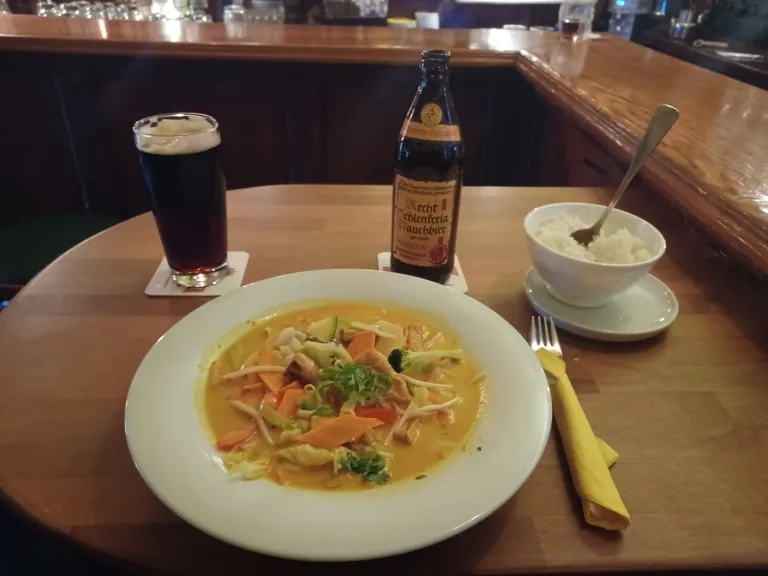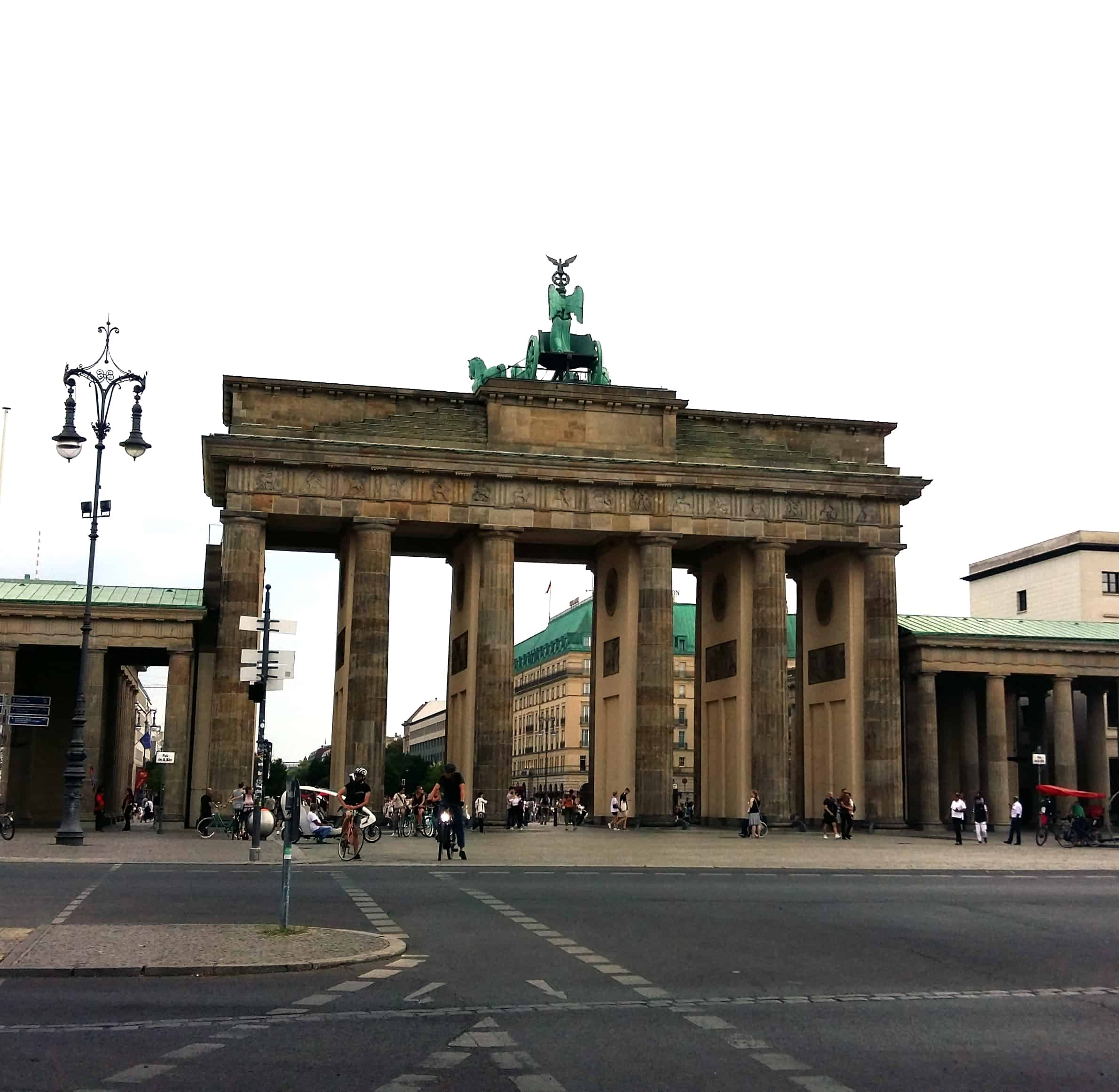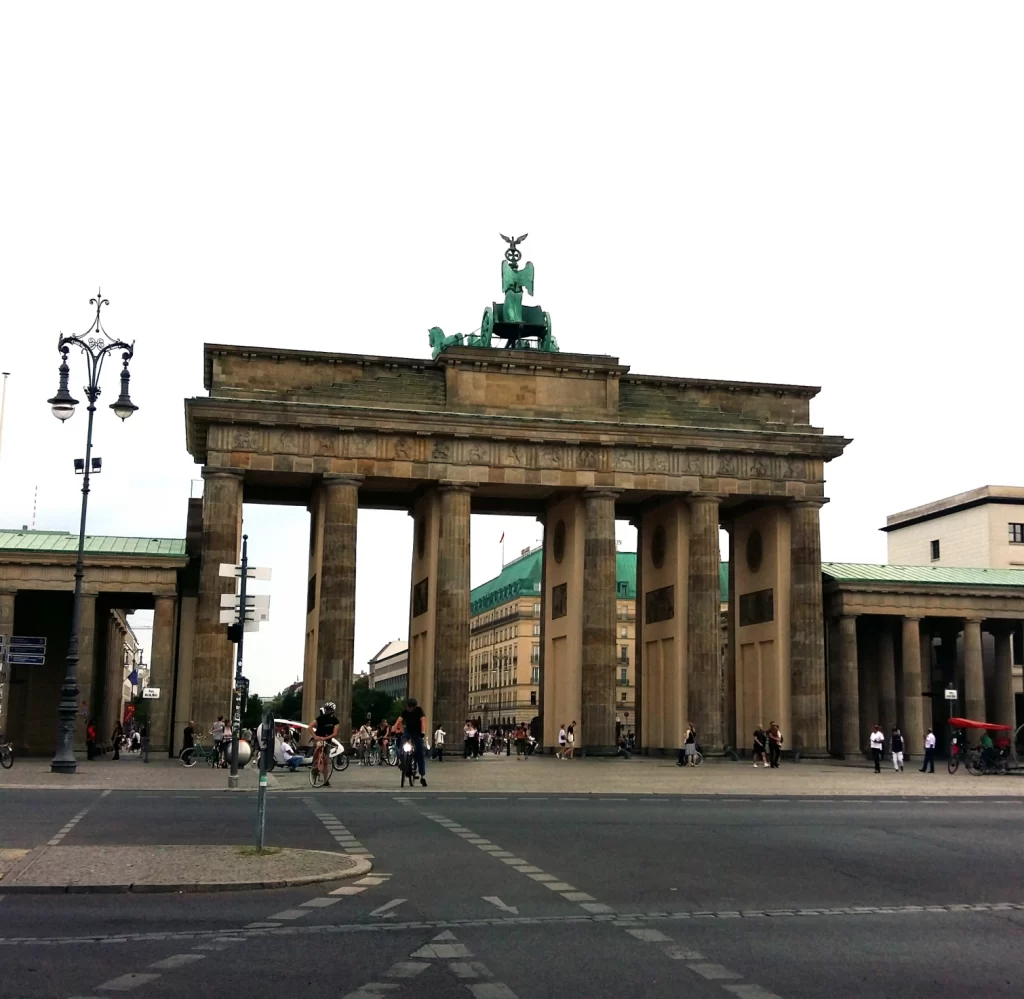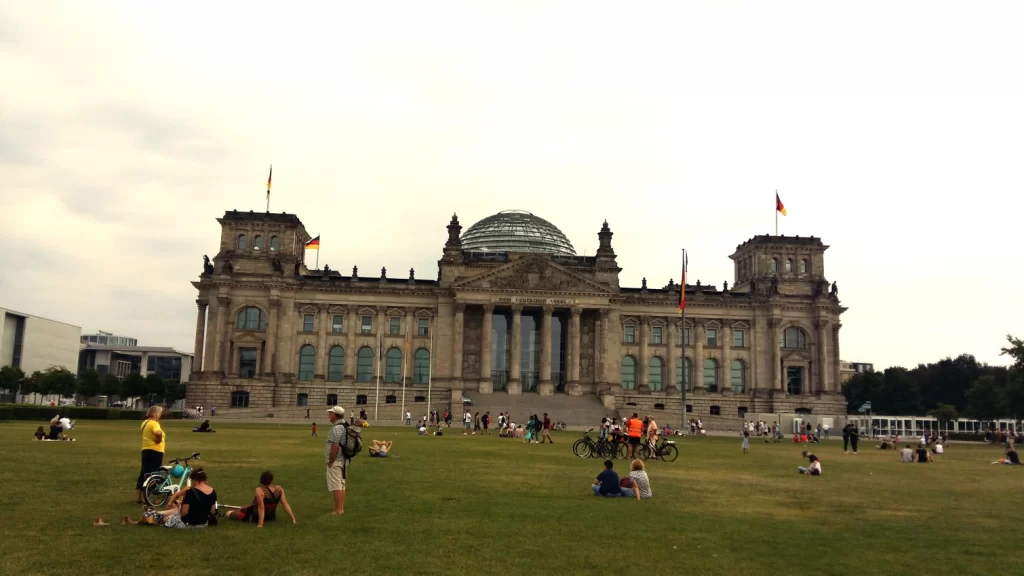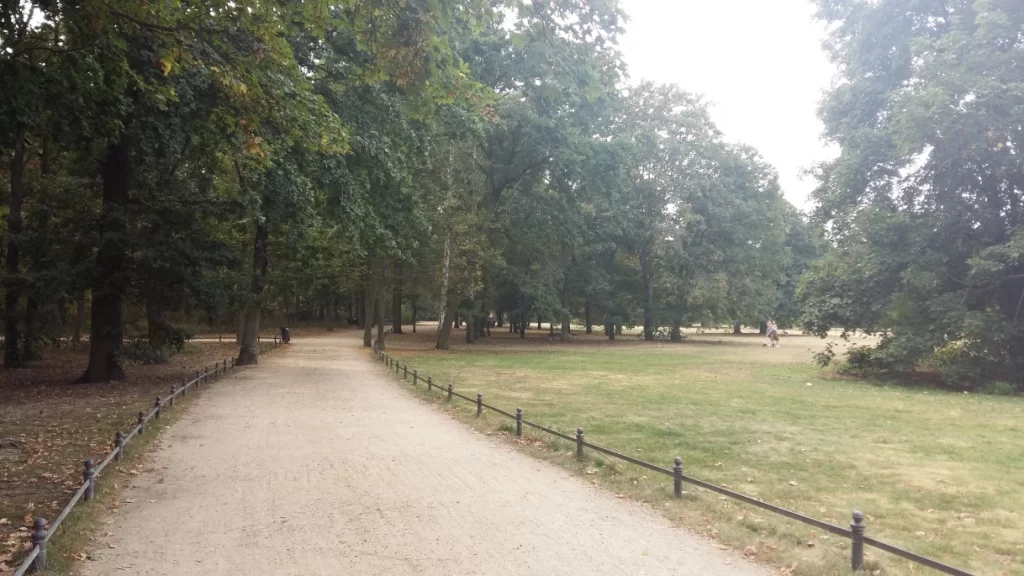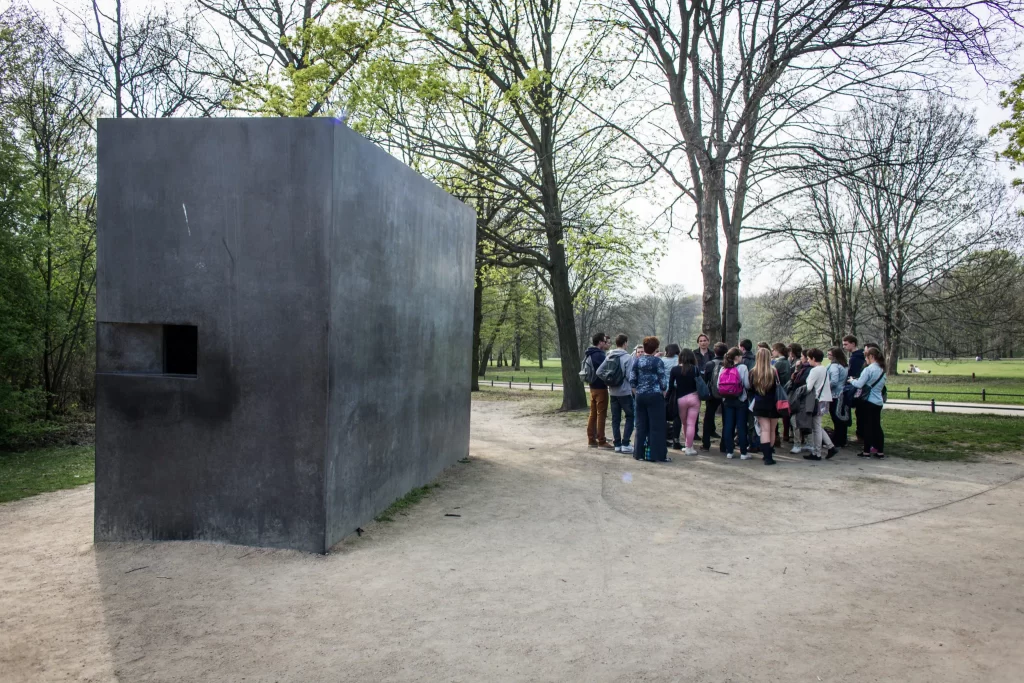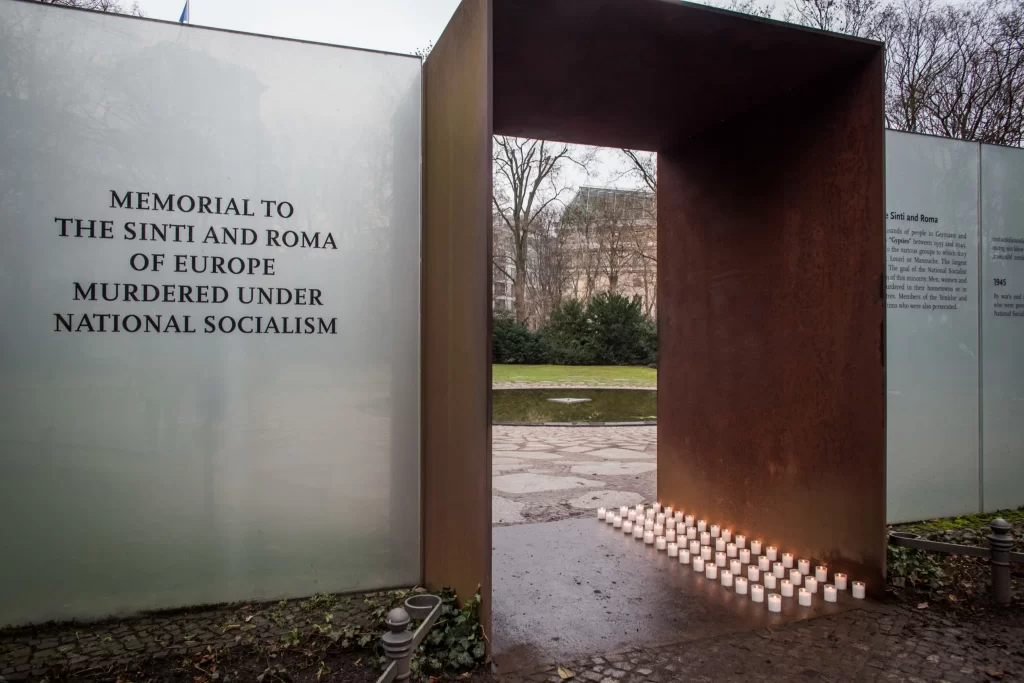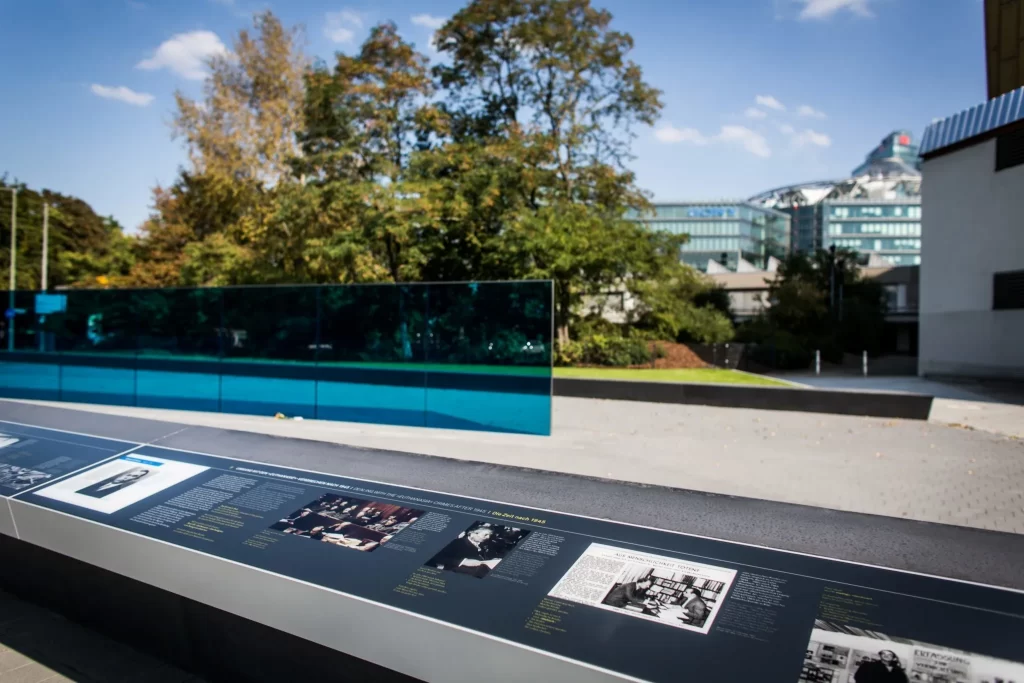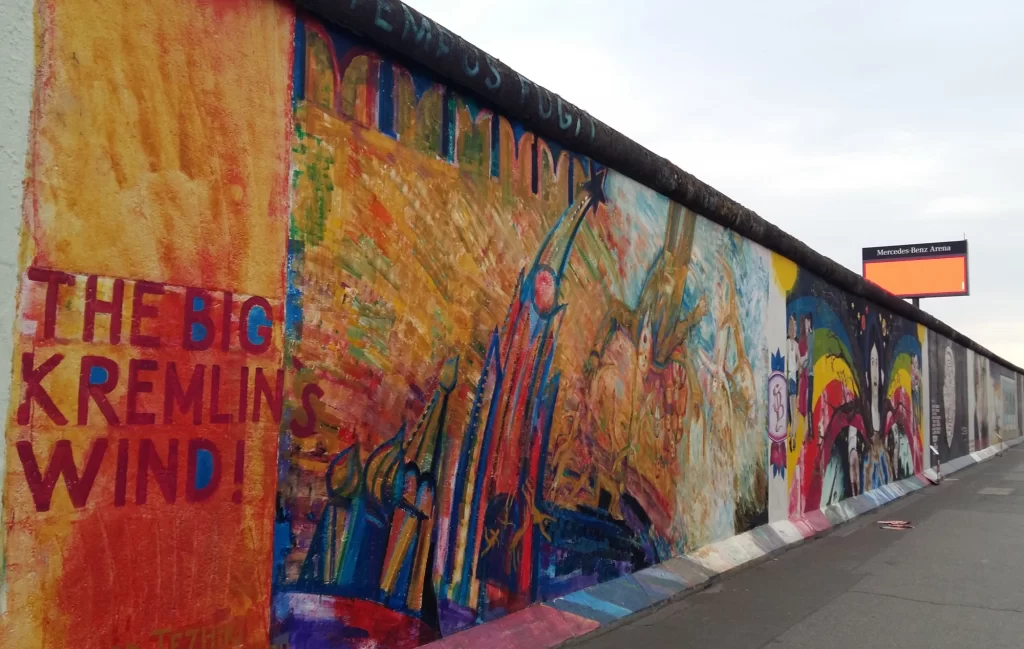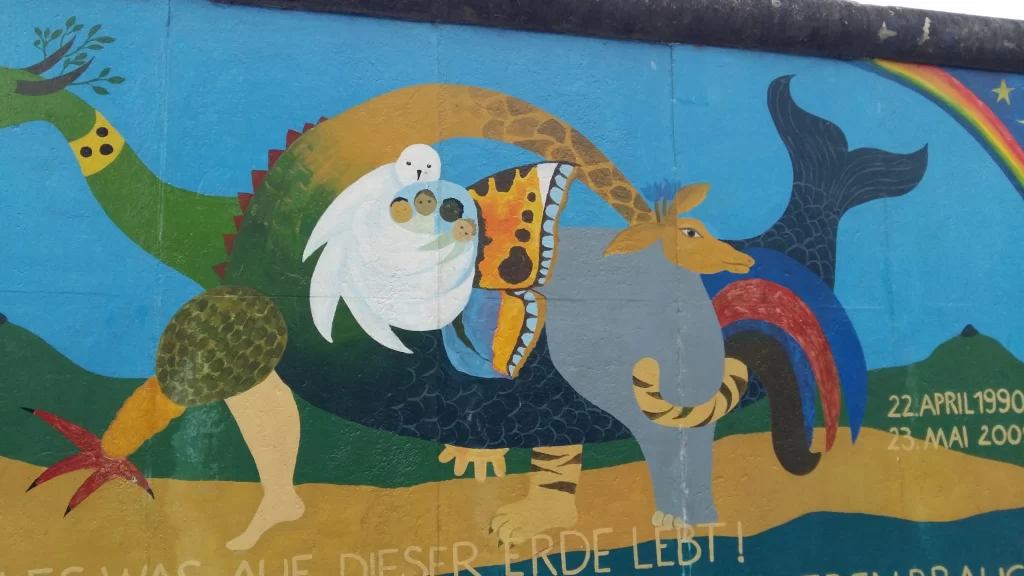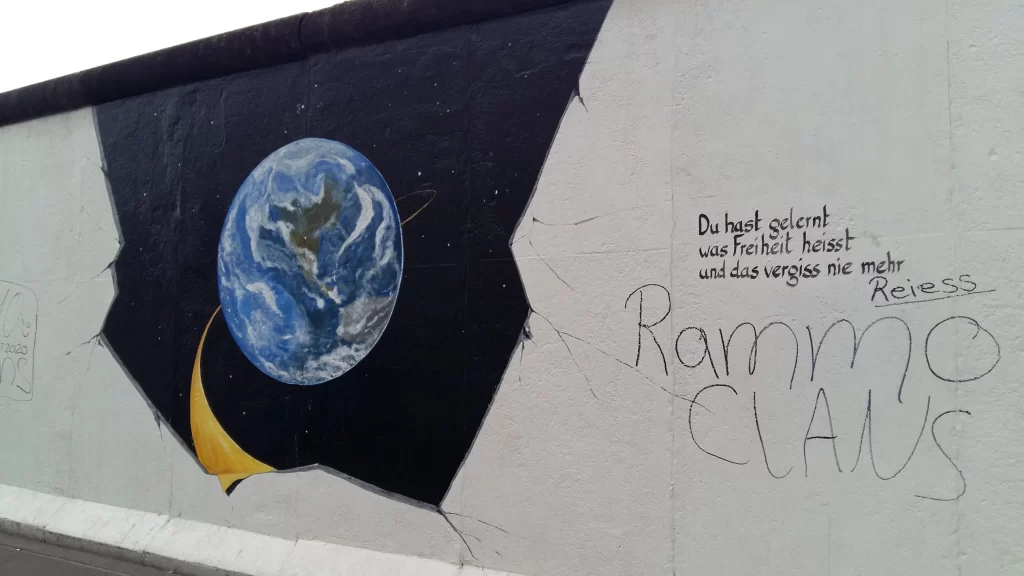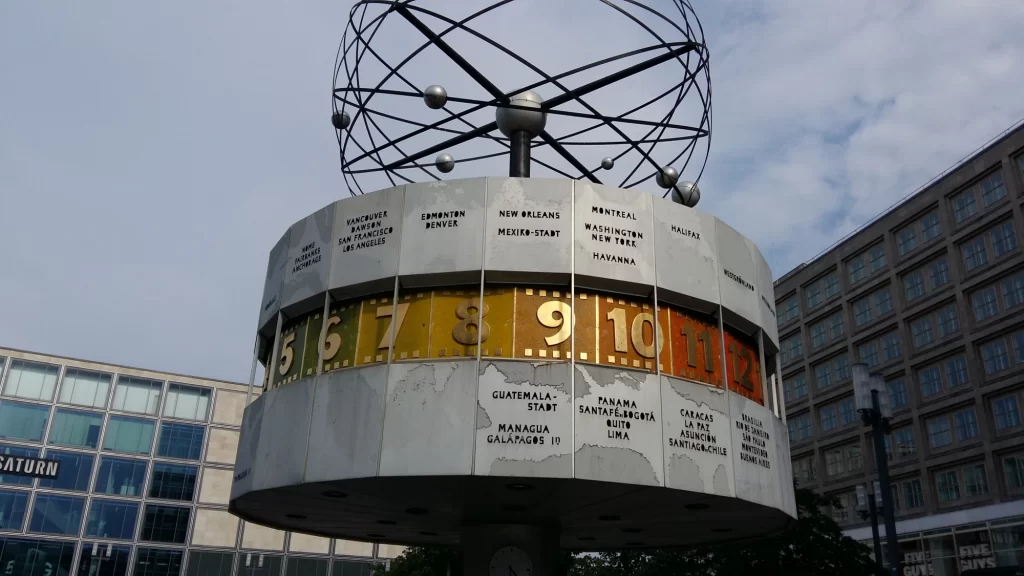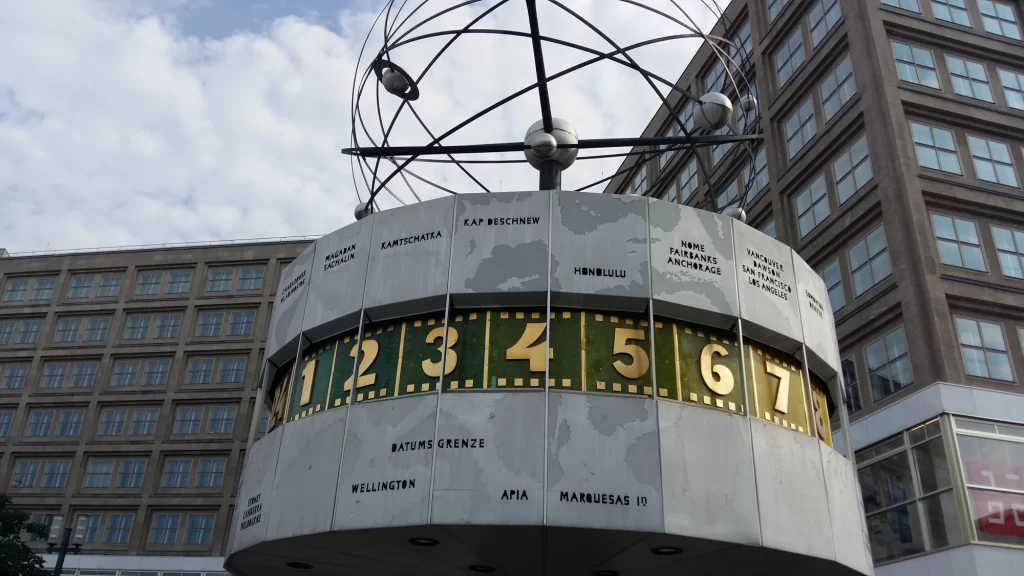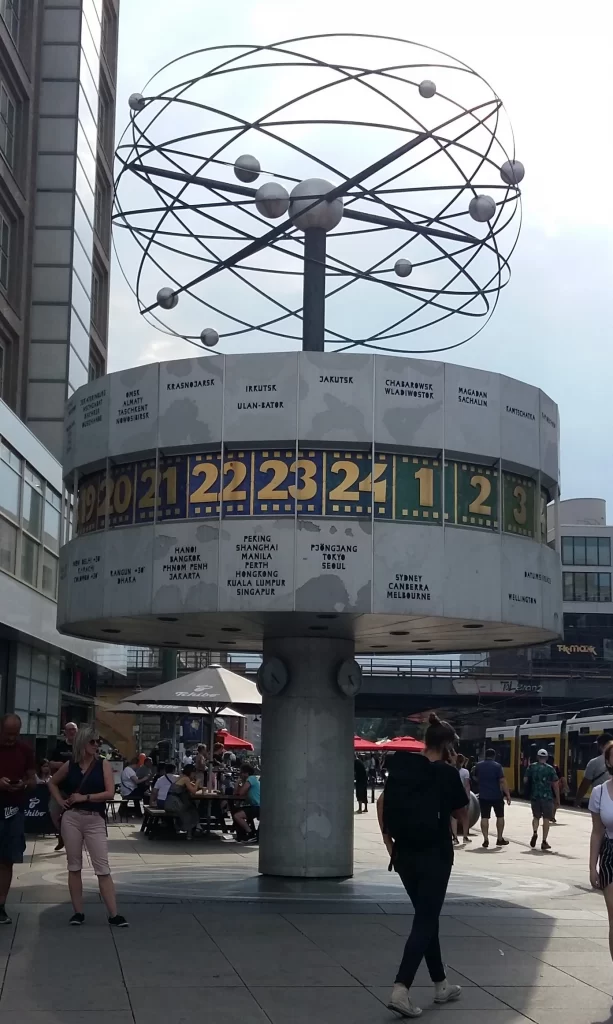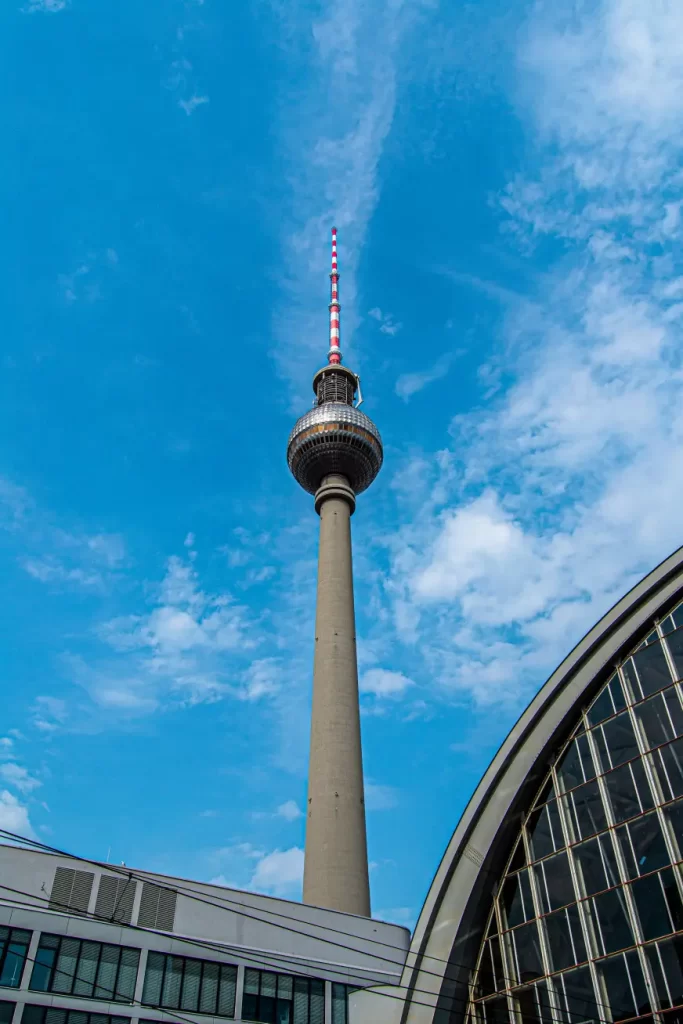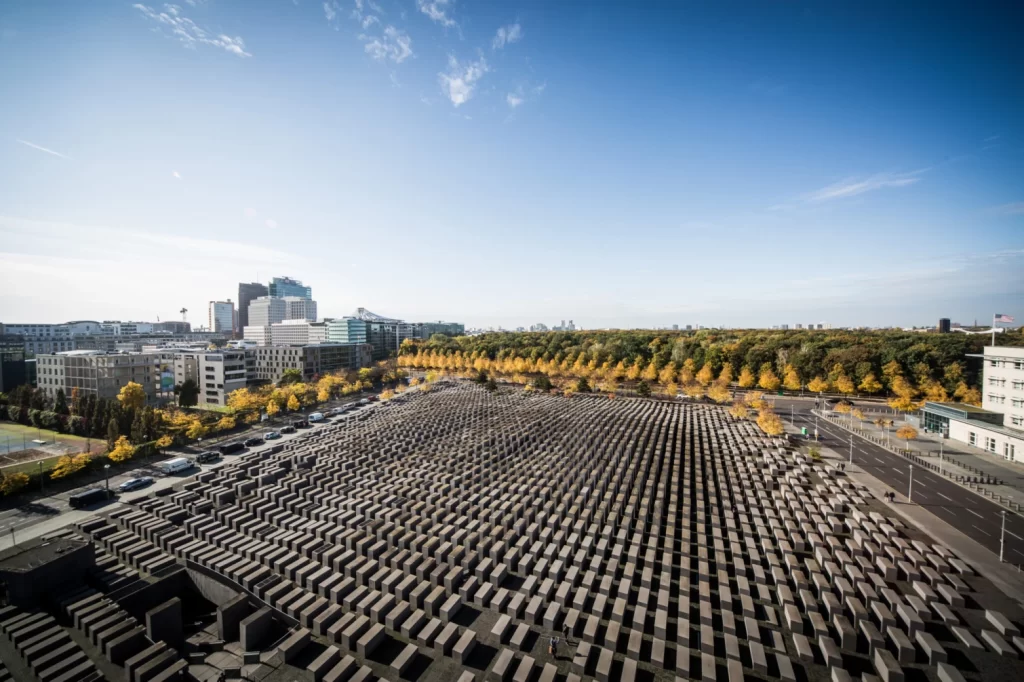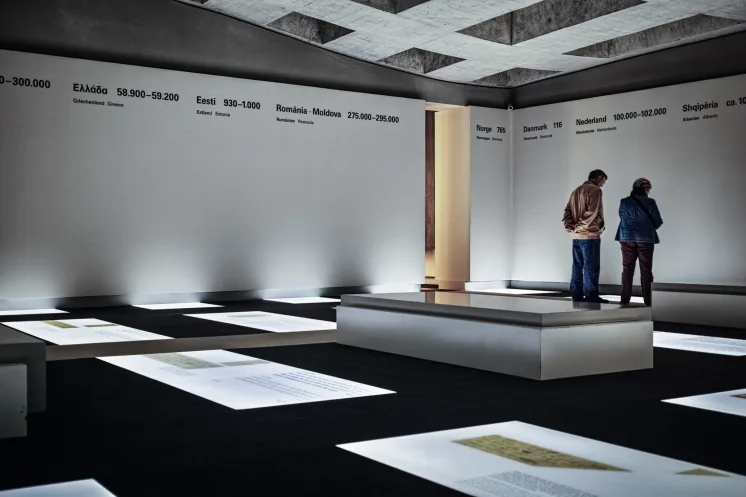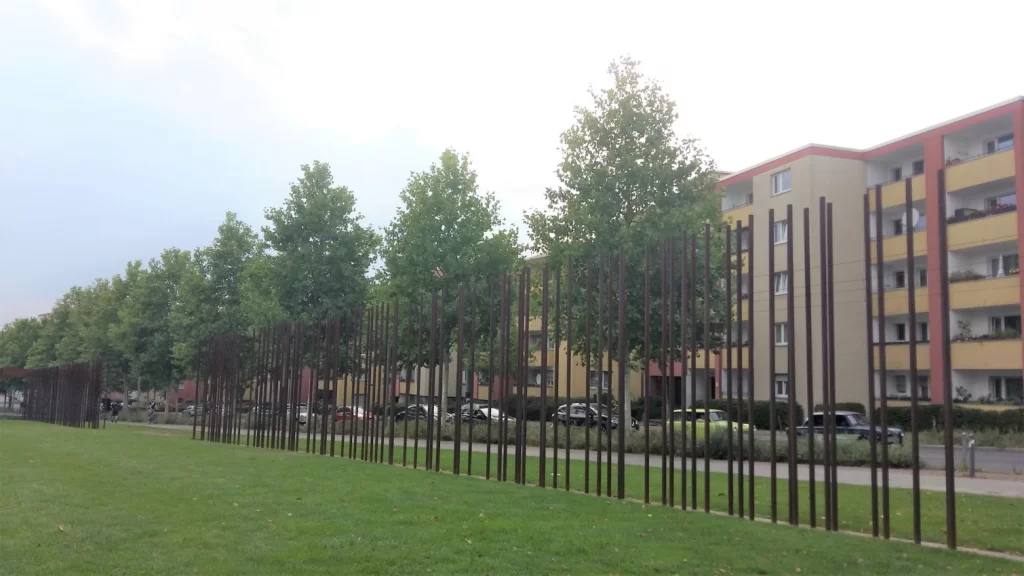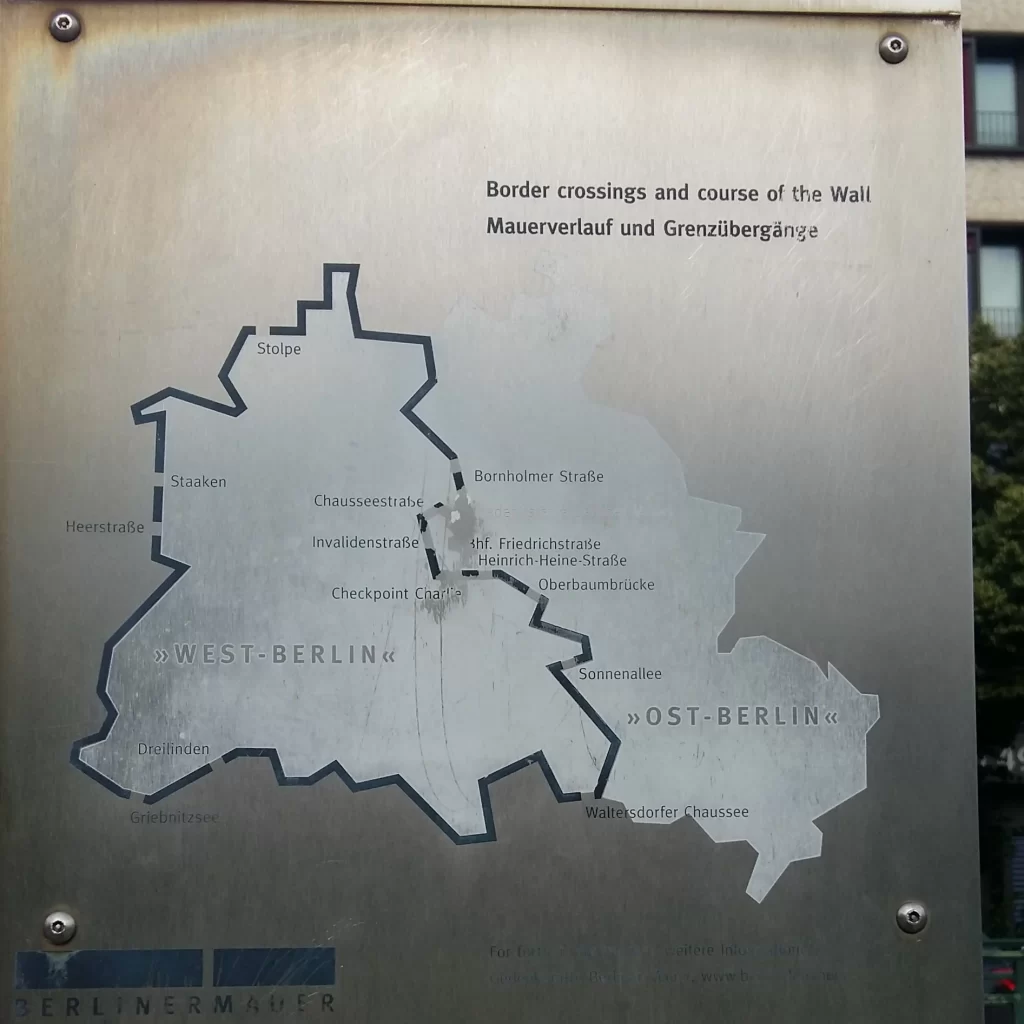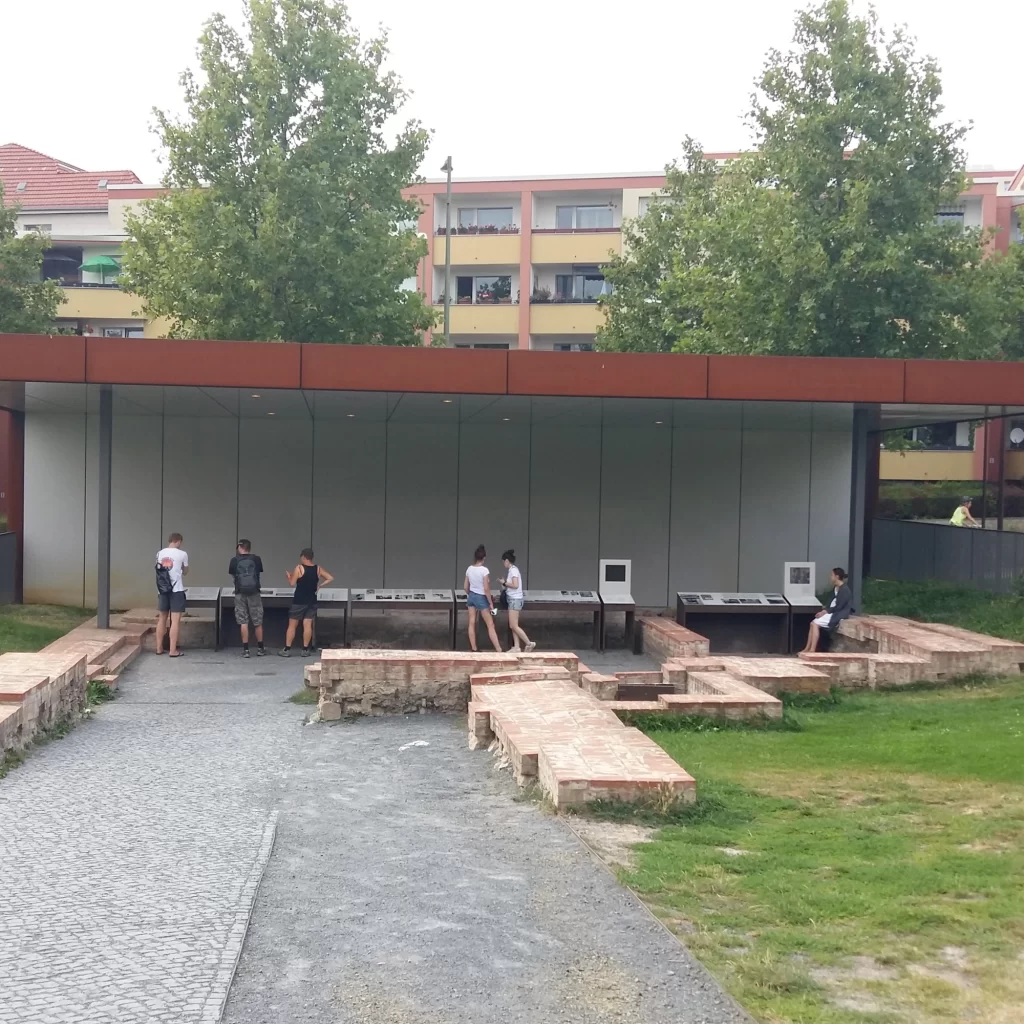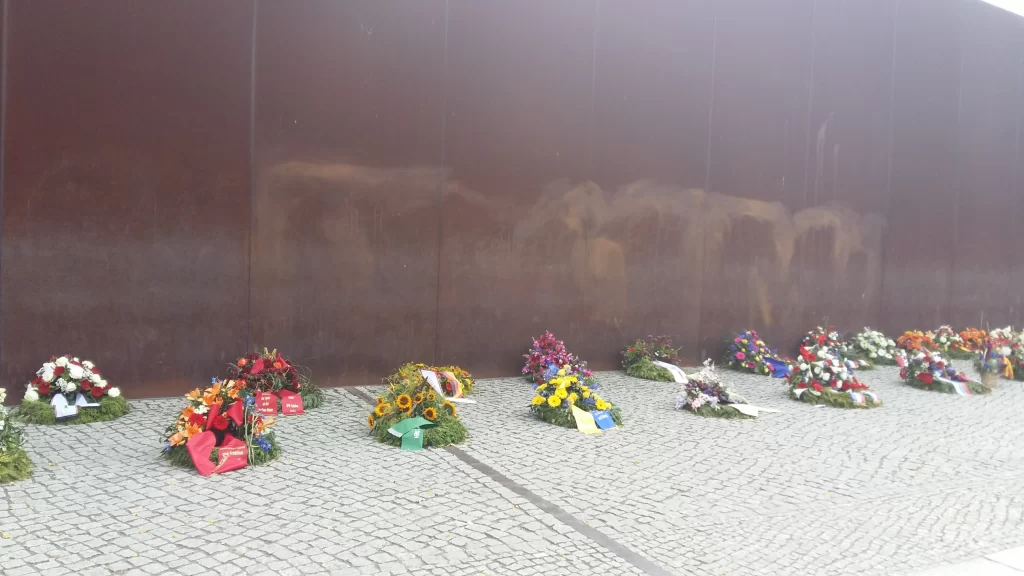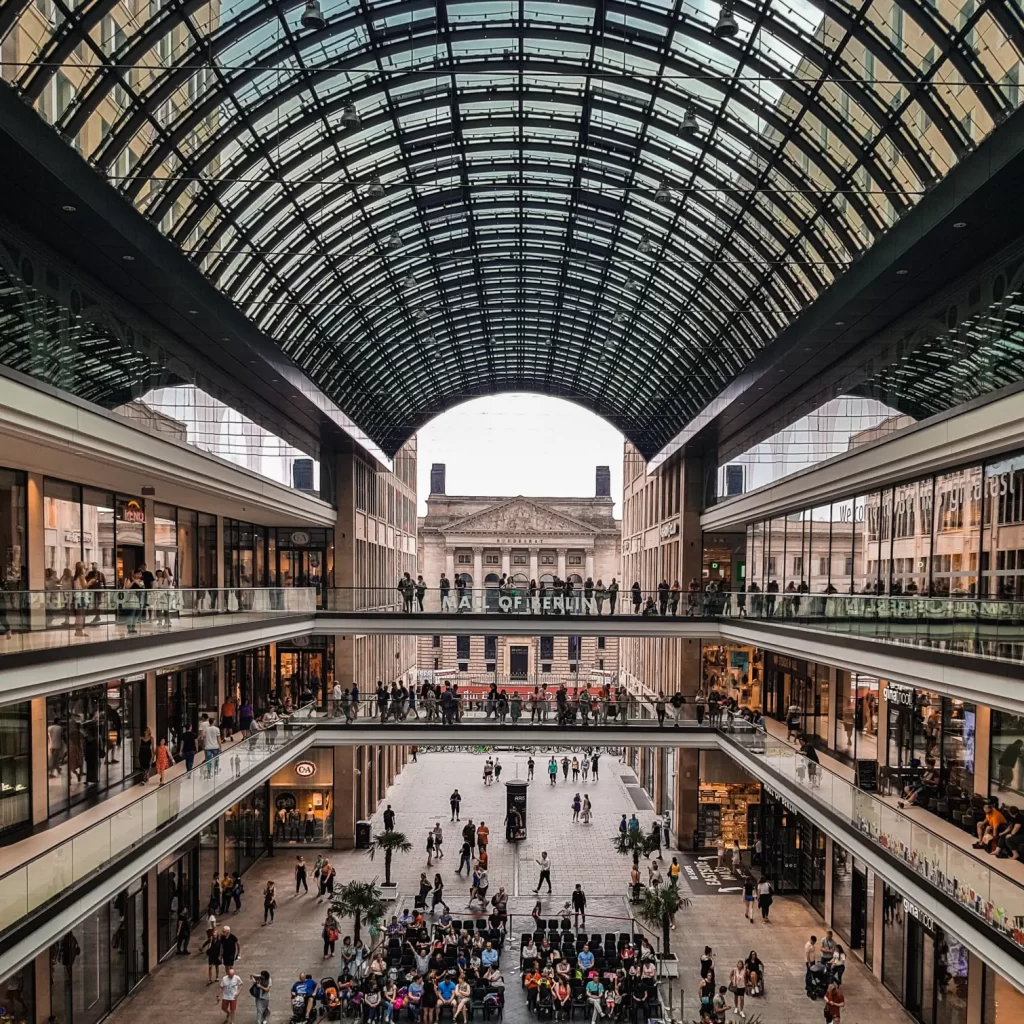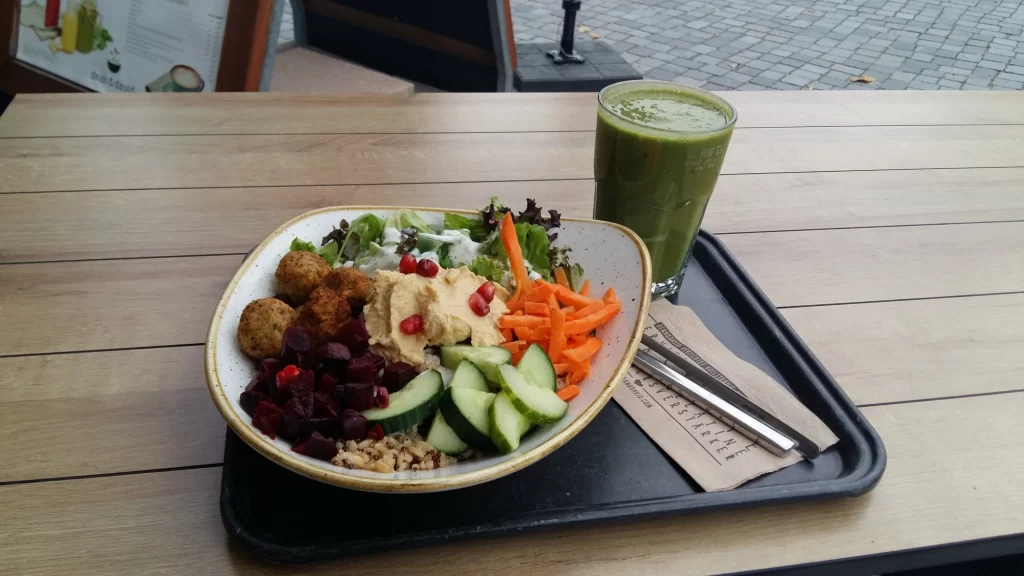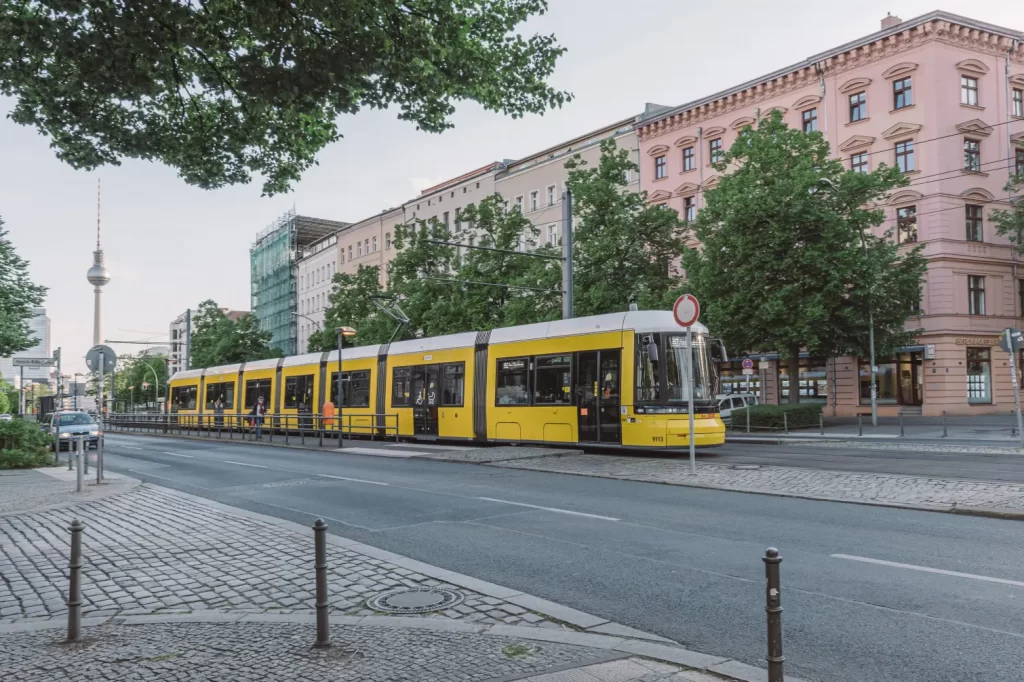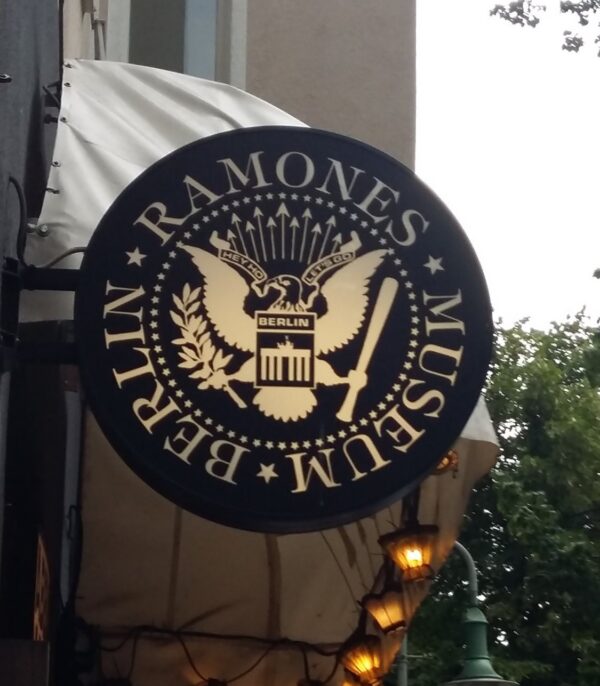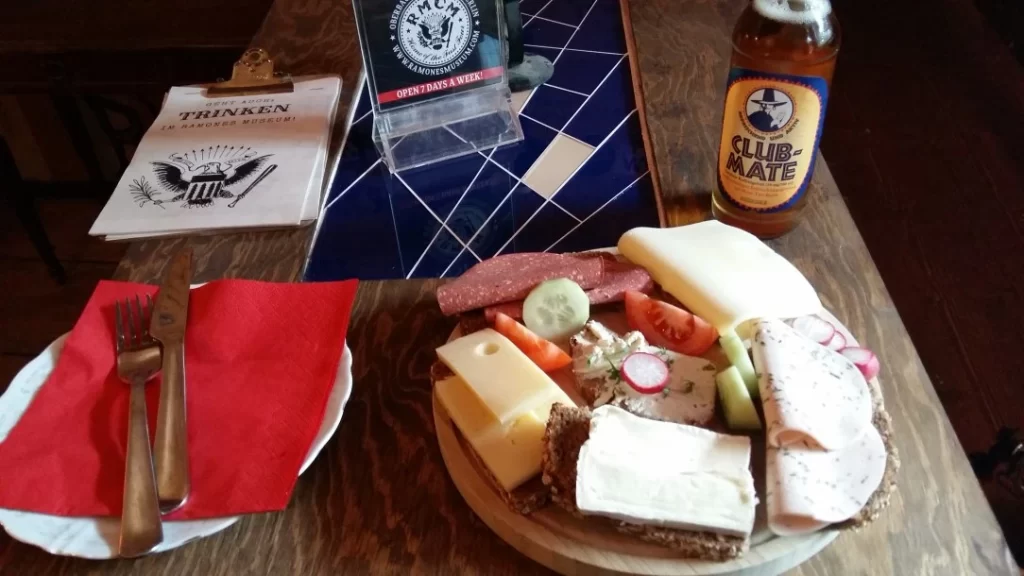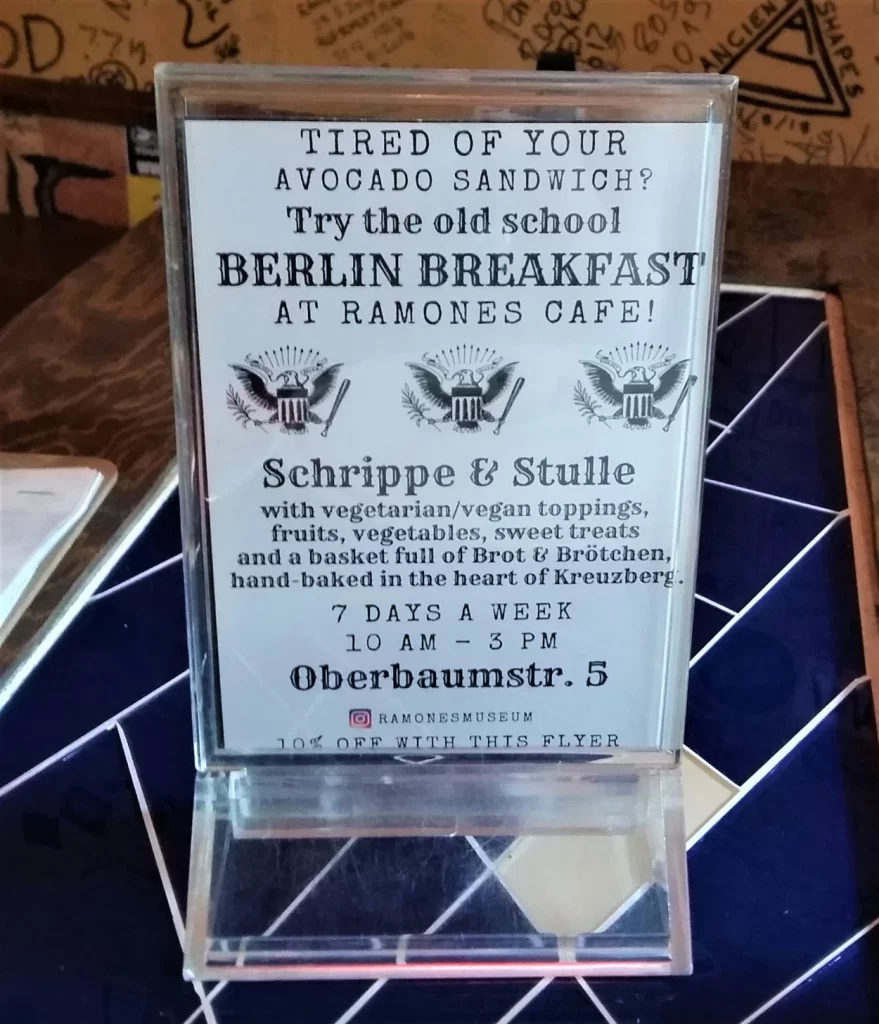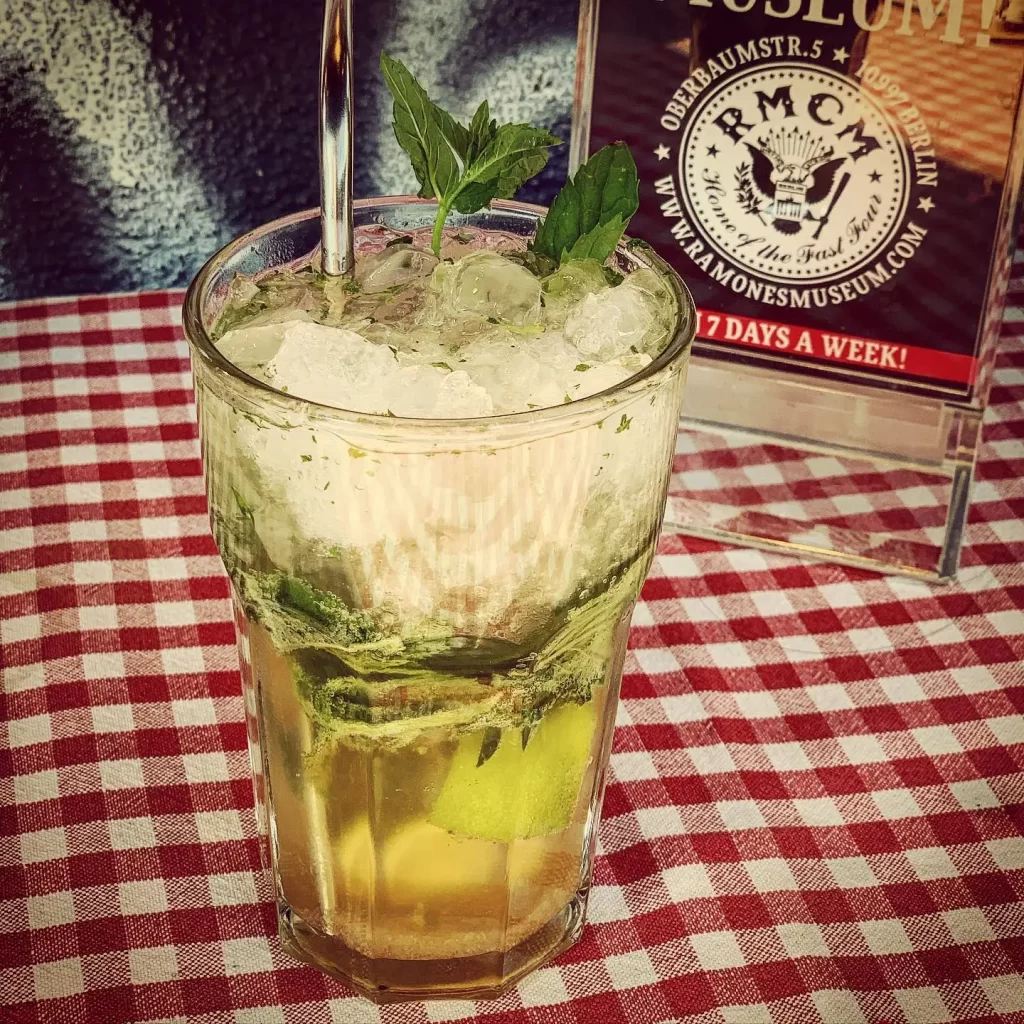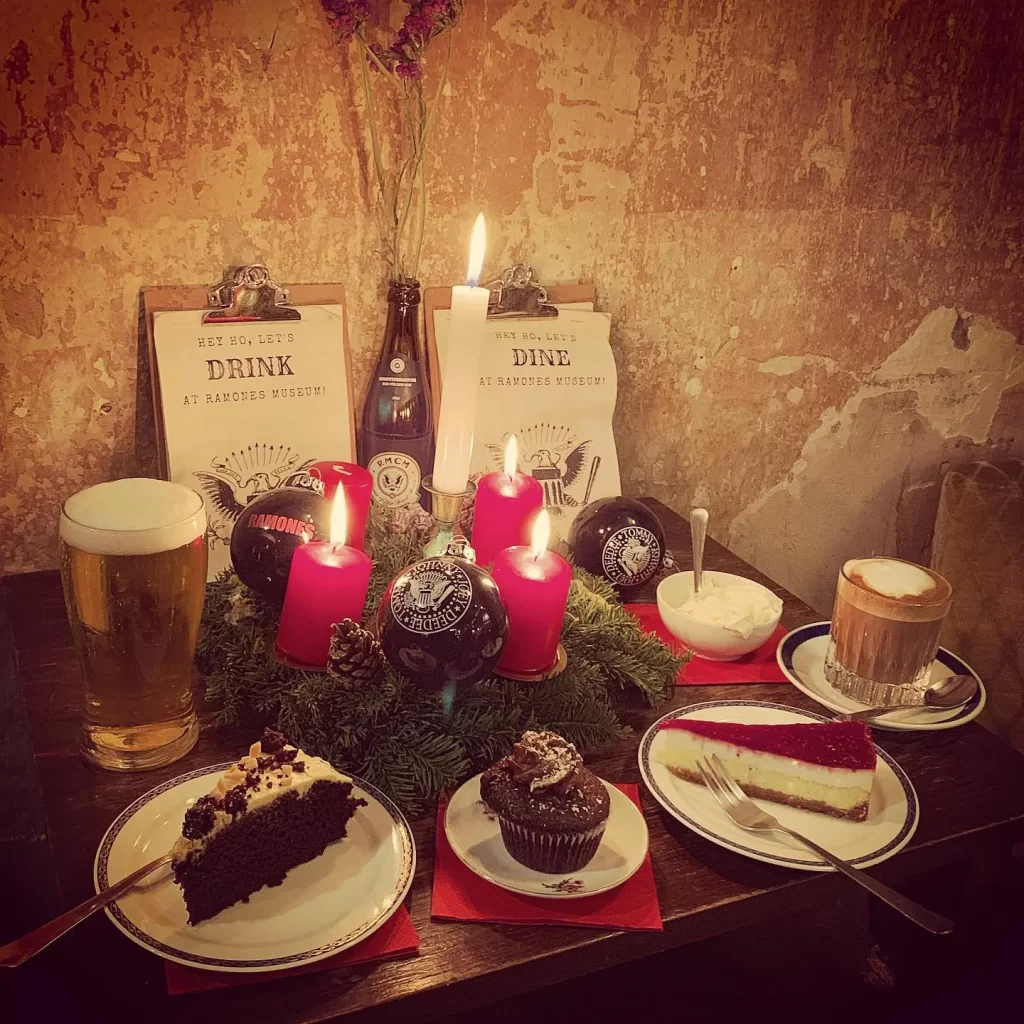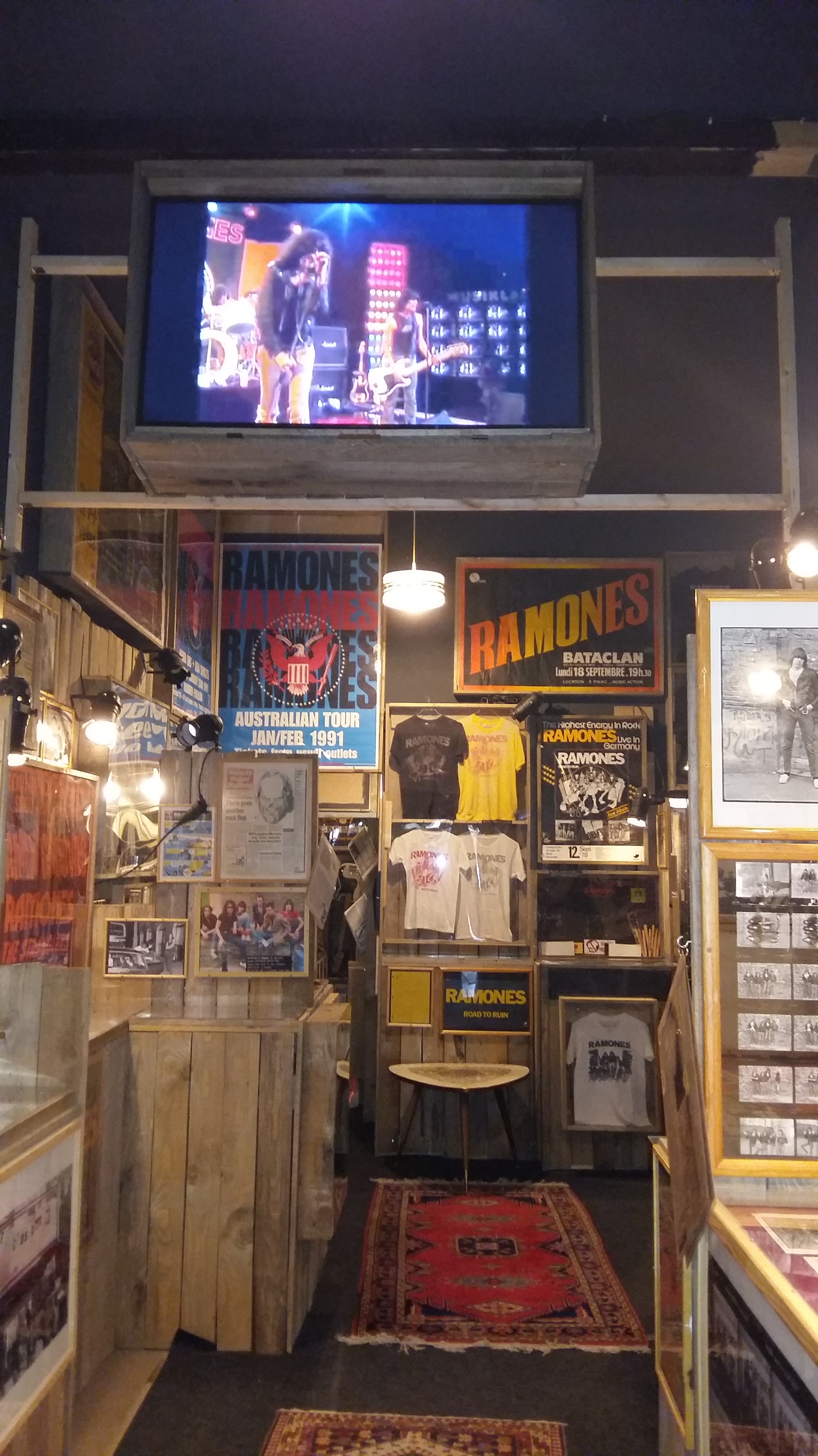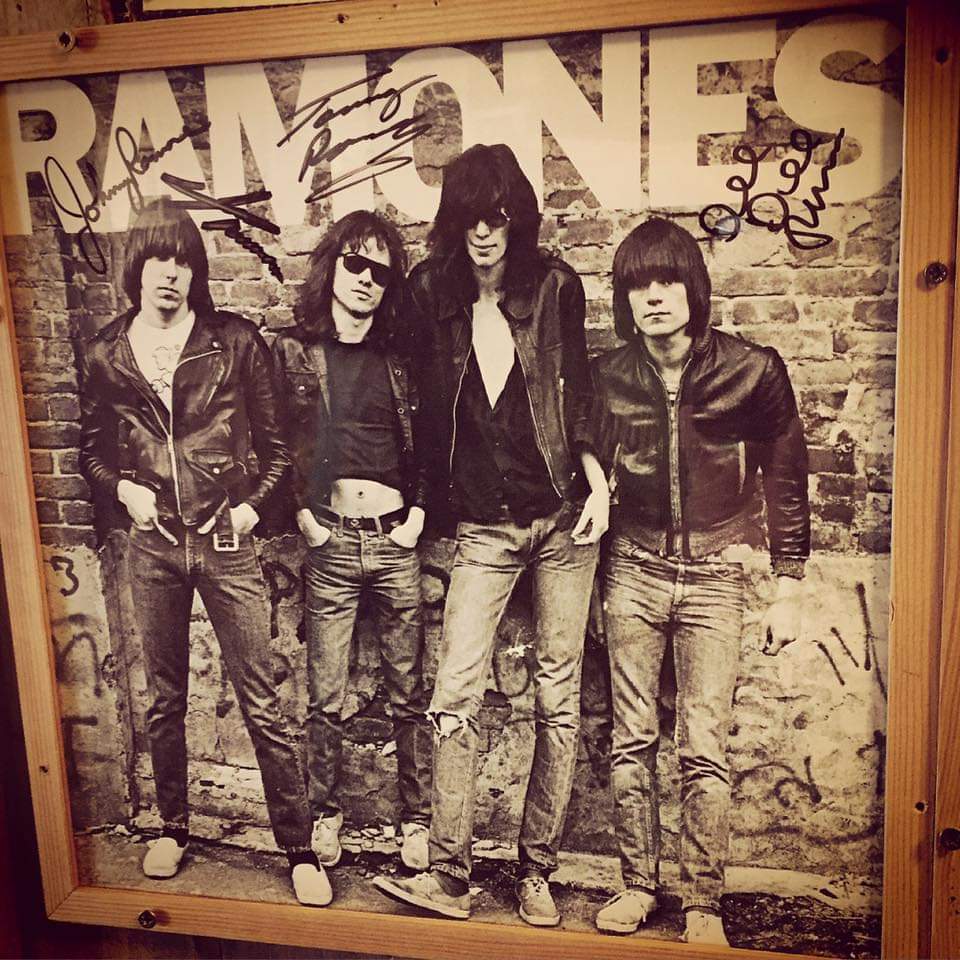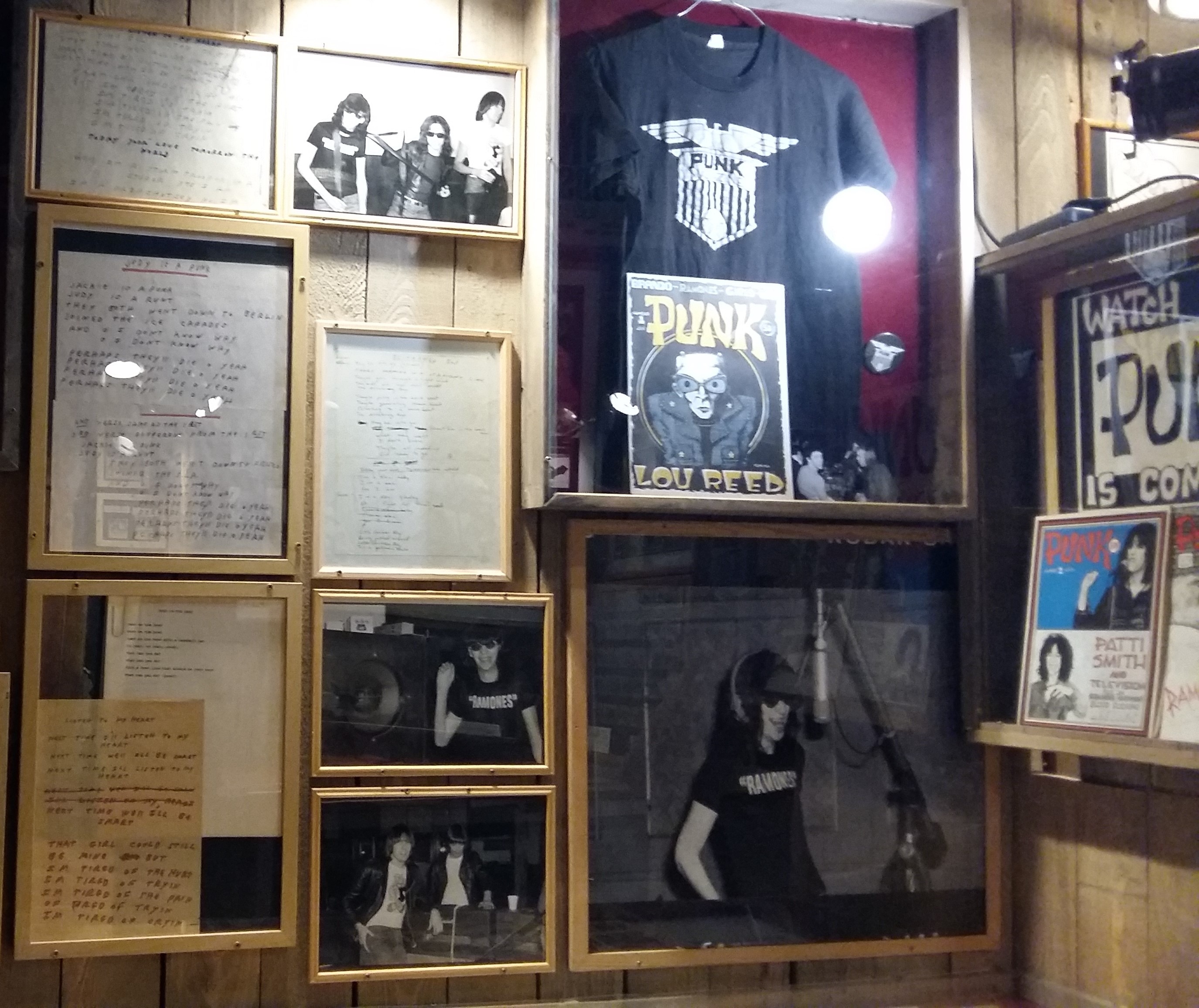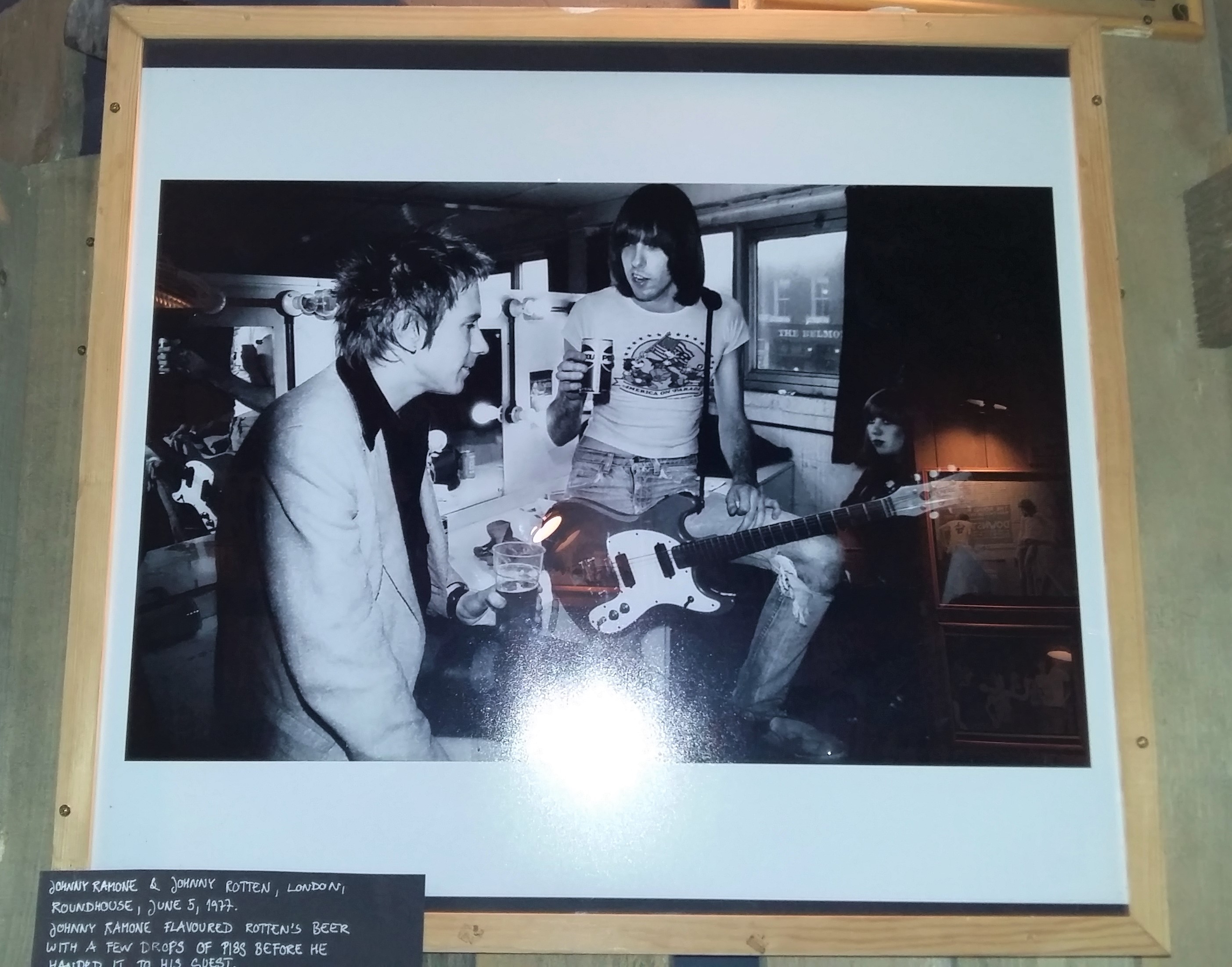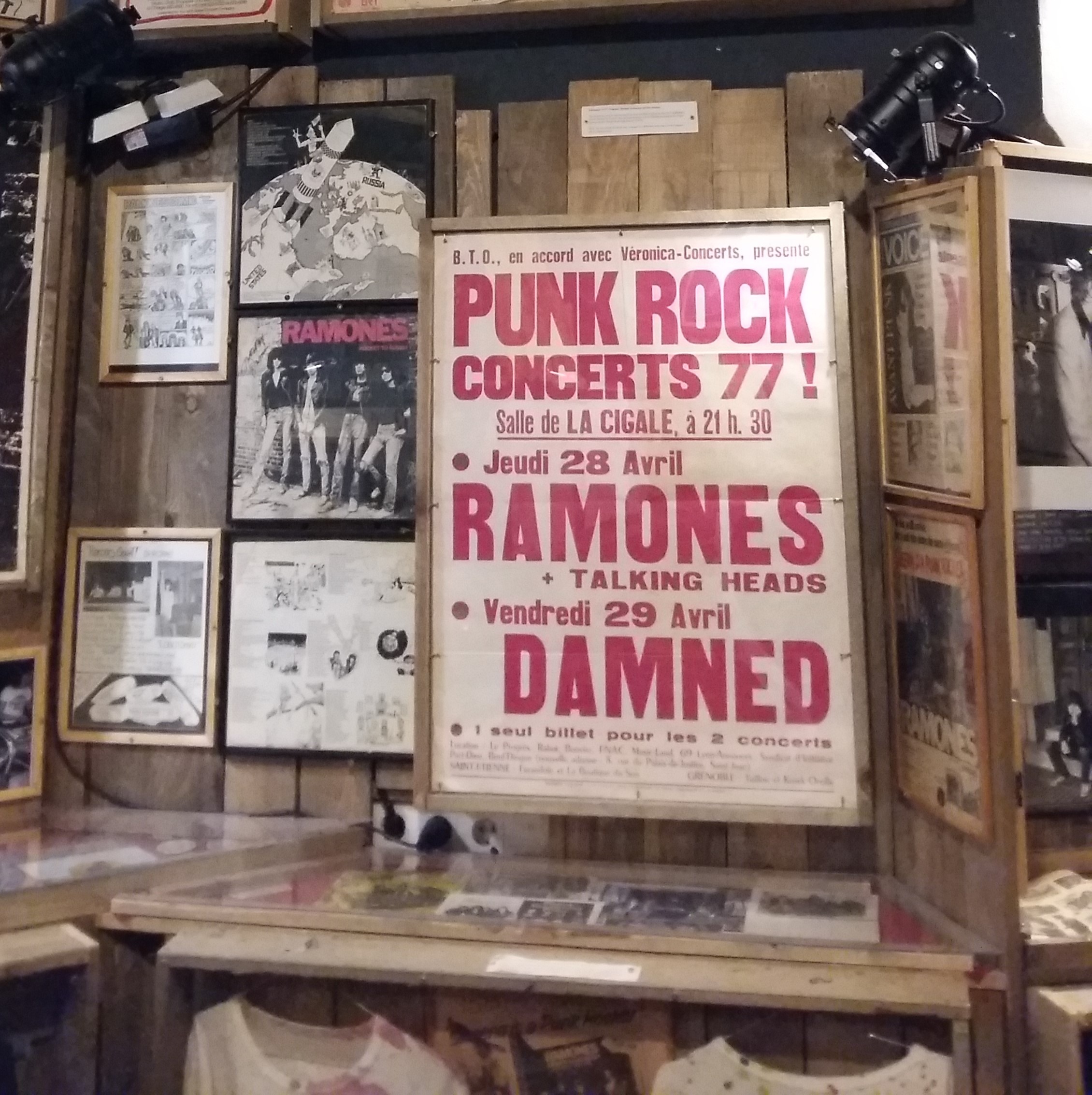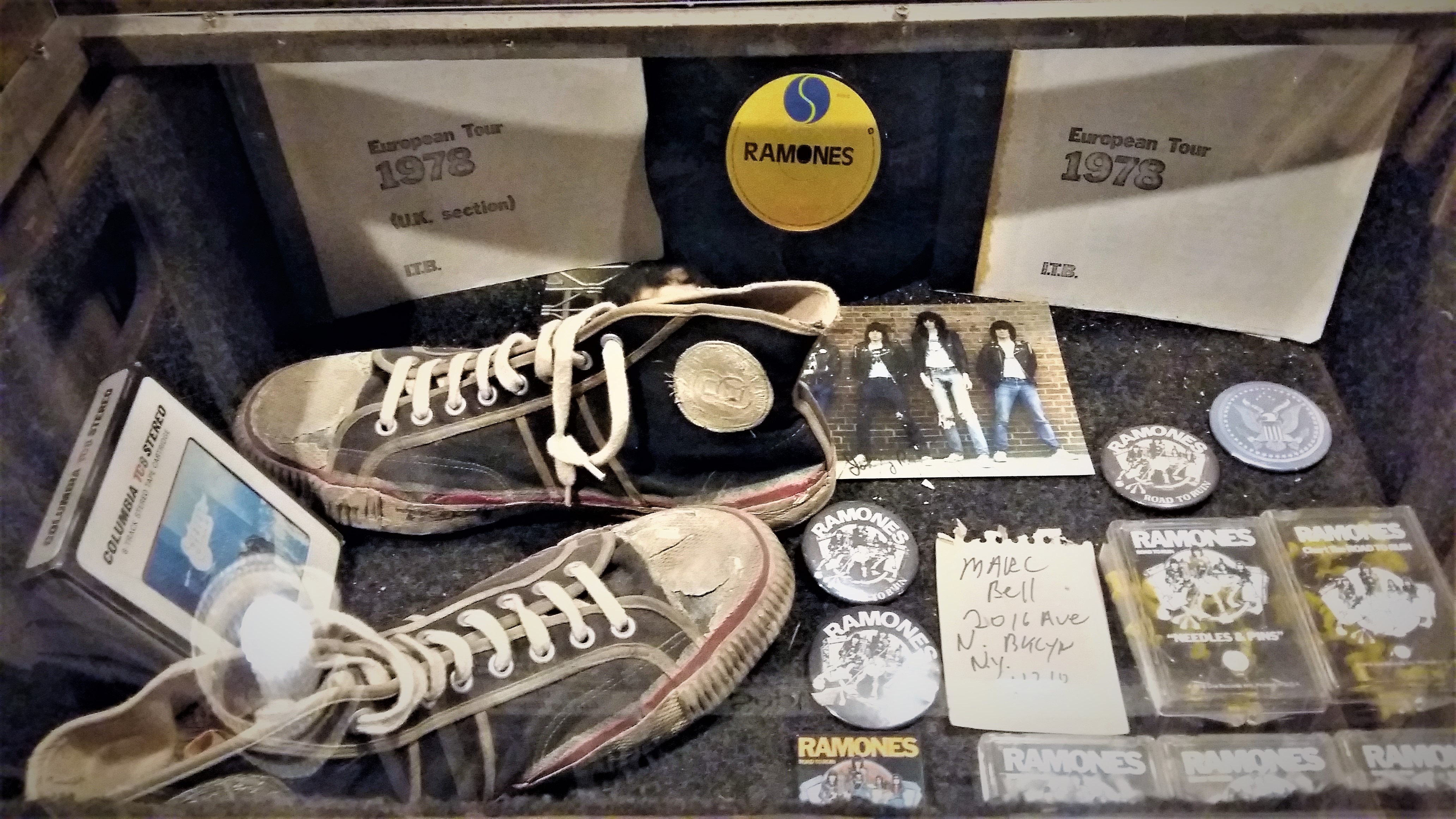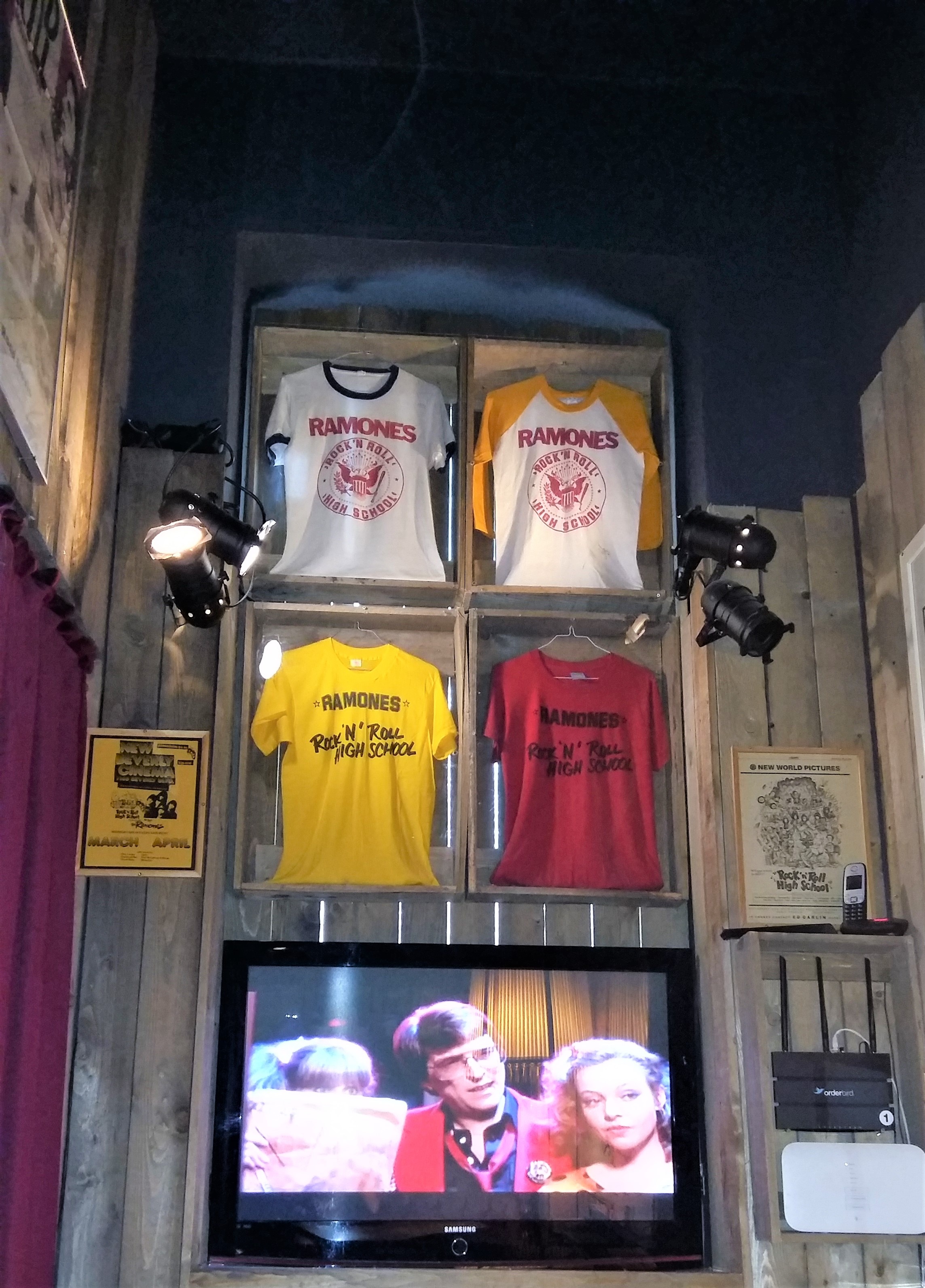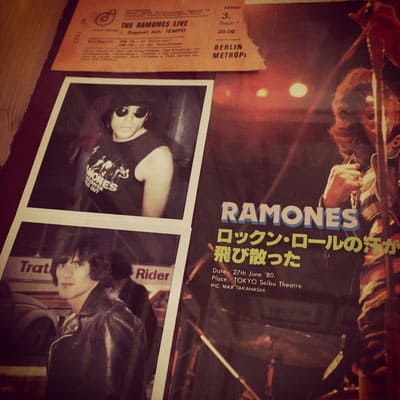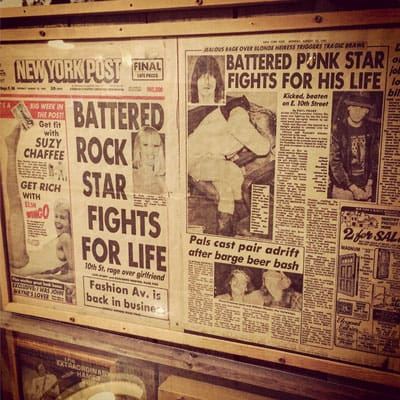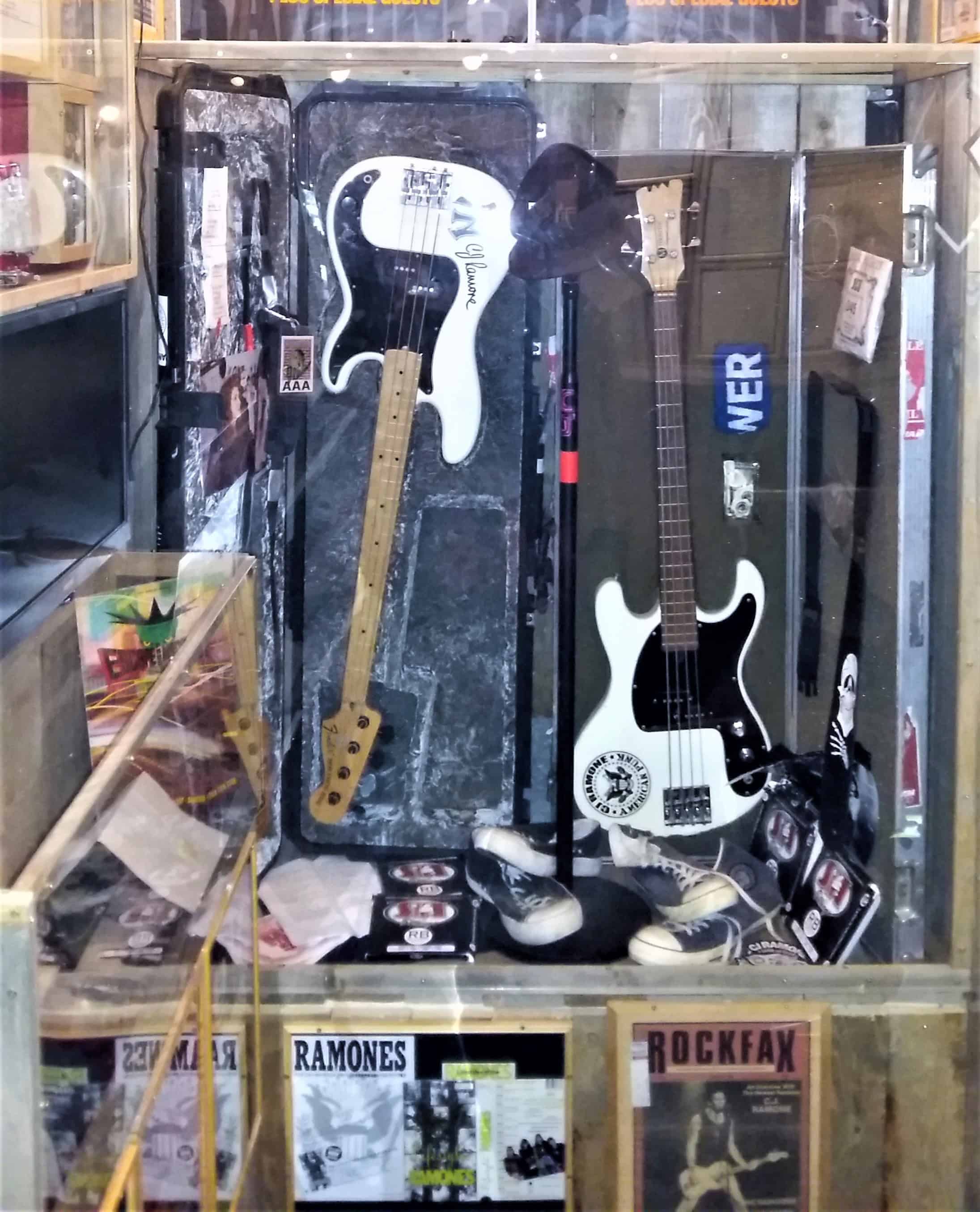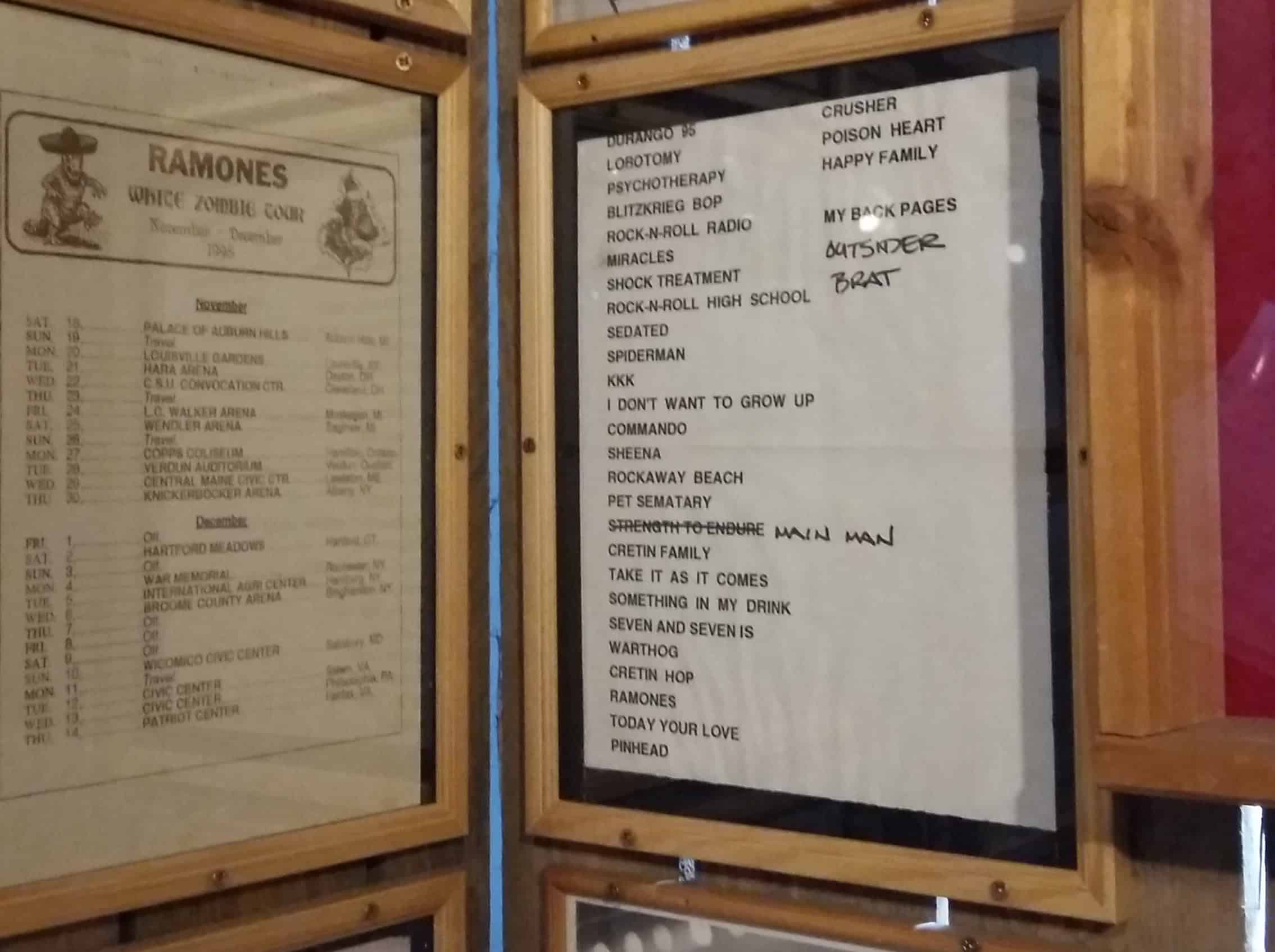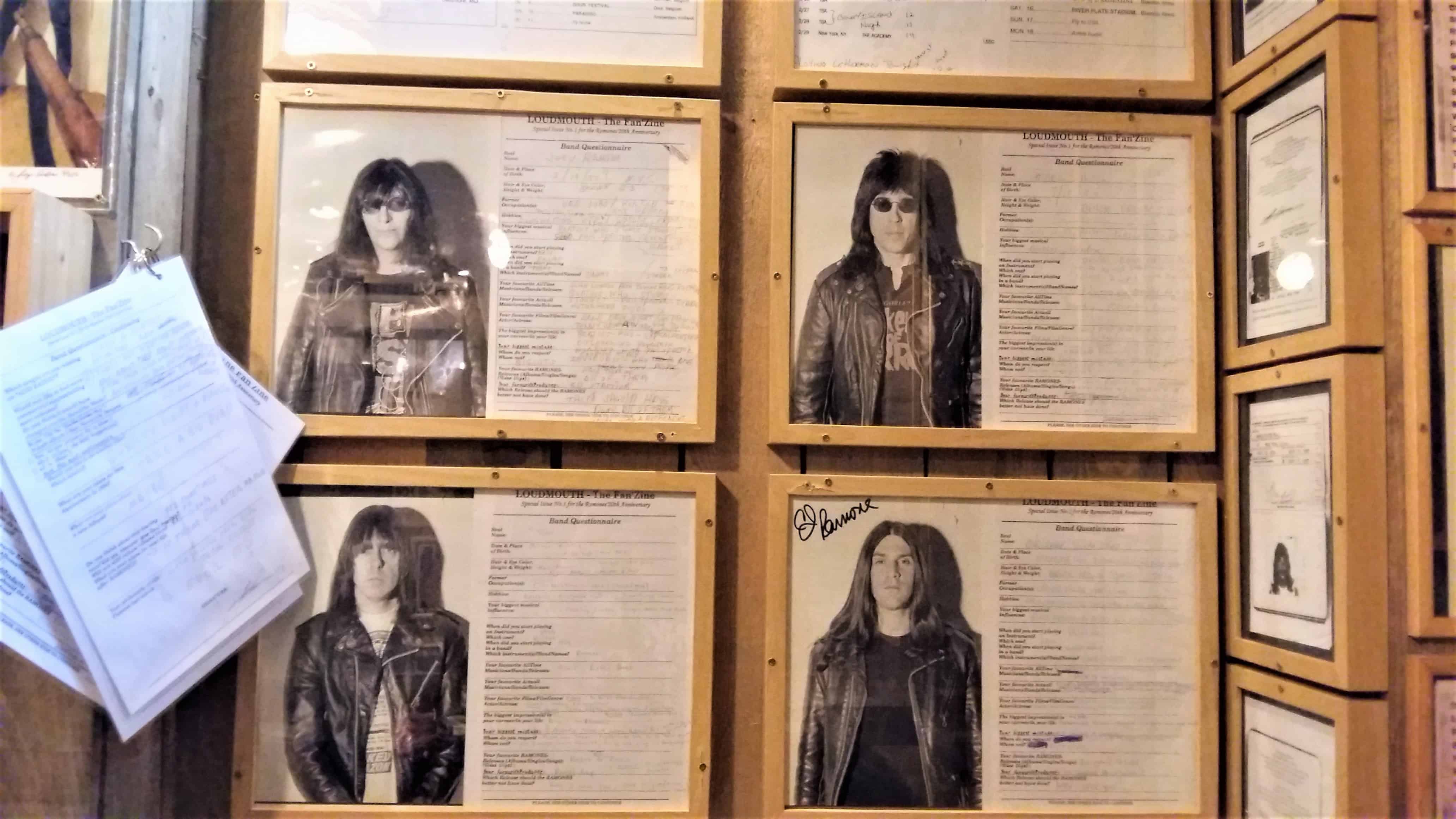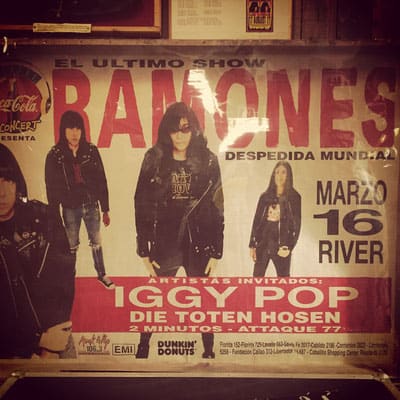Leipzig is the largest city in the east German state of Saxony. After it was founded in the 11th century, Leipzig quickly became an important economic centre. This is thanks to two major medieval trade routes meeting here, the Via Imperii and the Via Regia.
Similar to Berlin, Leipzig played an important role during the German Democratic Republic era from 1949 to 1990. For example, the peaceful Monday Demonstrations, which led to the fall of the Berlin Wall and Germany’s reunification, started here in 1989.
Today Leipzig is known as a hip and youthful city thanks to its many university students. Besides, it offers tons of old and newer architecture, such as unique churches, museums, and the New and Old Townhall.
This charismatic city has been a centre for music for hundreds of years, especially classical music. Some composers who lived and worked in Leipzig include Johann Sebastian Bach, Richard Wagner, and Felix Mendelssohn.
Nowadays, there’s a large Punk music scene in Leipzig, which is most apparent in the Connewitz district.
I had a blast during my visit to Leipzig in May 2024! So in this post, I’m sharing 9 Reasons to Visit Leipzig for a day on your Germany trip.
Disclosure: I only recommend products that I’ve used in the past, and all opinions expressed in this post are my own. This post contains affiliate links. If you use one of the links throughout the page to buy something, I may earn a small commission at no extra cost to you. Thank you!
Nikolaikirche (St. Nicholas Church)
Address: Nikolaikirchhof 3, 04109 Leipzig, Germany
One of Leipzig’s famous historical landmarks is Nikolaikirche in the city centre. It was completed in 1165, soon after Leipzig was founded, and is the oldest church in the city.
At 63 meters (207 ft) high, it’s also Leipzig’s tallest church and more than 1,400 people can sit in here.
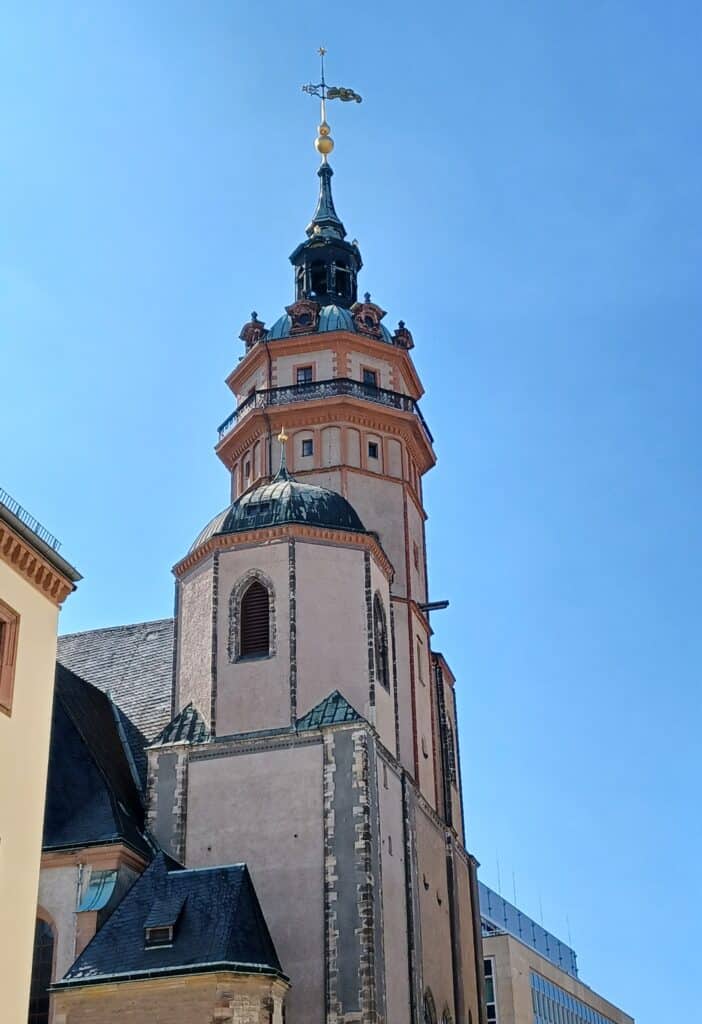
This Protestant church was first built in a Romanesque style, but was turned into a Gothic hall church in the 16th century. Baroque elements, like the tower, were added in the 18th century.
Johann Sebastian Bach was responsible for composing its church music during his time in Leipzig.
Prayers for Peace started at Nikolaikirche every Monday in 1982. So it’s no surprise that the church was the starting point of the Peaceful Revolution against the GDR Communist rule in 1989. Protesters met here every Monday at 5 pm, which, contributed to the fall of the Berlin Wall in the same year.
Today there’s still a Prayer for Peace at Nikolaikirche on Mondays at 5 pm.

Check out the Bild zur Deutschen Einheit (Mural of a United Germany)
Address: Willy-Brandt-Platz 7, 04109 Leipzig, Germany
Only a few steps further, you can’t miss the colourful and expressive Bild zur Deutschen Einheit. Until recently, this acrylic painting was a part of the wall of the Marriott Hotel. It was painted by local artist Michael Fischer-Art in September 2009, almost 20 years after the fall of the Berlin Wall.
Michael Fischer-Art painted this large mural to deal with his experiences as a participant of the Monday Demonstrations in 1989 and growing up under the oppressive GDR regime. He also designed his own banners during the protests.
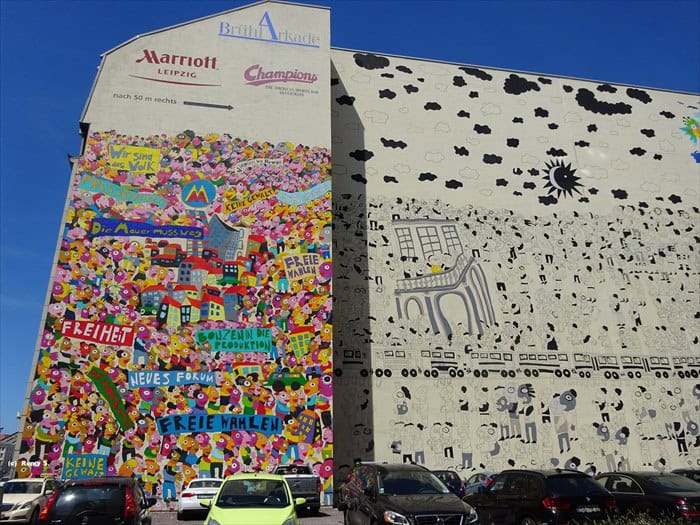
The Bild zur Deutschen Einheit mural is 100 meters (328 ft) long and 30 meters (98 ft) wide. On the left side it shows the peaceful demonstrations of 1989, in the middle are pictures of the theme “escape to freedom”, and on the right side is the Berlin Wall.
Michael Fischer-Art painted this unique artwork so the terror of the GDR dictatorship and the Peaceful Revolution of 1989 will never be forgotten.
The Bild zur Deutschen Einheit mural was recently removed from its original spot because of the Marriott Hotel’s reconstruction projects. But fortunately, this important piece of history could be saved. You can currently admire it at the Promenaden in Leipzig’s Hauptbahnhof (central train station) until May 18, 2025.
Check out the “Unzeitgemäße Zeitgenossen” Sculpture (Untimely Contemporaries)
Address: Grimmaische Strasse, 04109 Leipzig, Germany
A very unusual, but eye-catching attraction sits right inside a pedestrian walkway in Leipzig’s city centre: The Unzeitgemäße Zeitgenossen sculpture. Back in the late 1970’s, Bernd Göbel, a sculptor of the nearby city of Halle (Saale) was unhappy with certain people who were part of GDR society.
Soon after, he decided to create a sculpture of five people. Two examples of these are a female teacher who uses the sledgehammer method and a city planner who demolishes a spot before starting to build something. It’s supposed to represent the hypocrisy of the GDR regime.
After several years of negotiating with the City of Leipzig, the Unzeitgemäße Zeitgenossen sculpture was finally put up in its current spot in 1990.
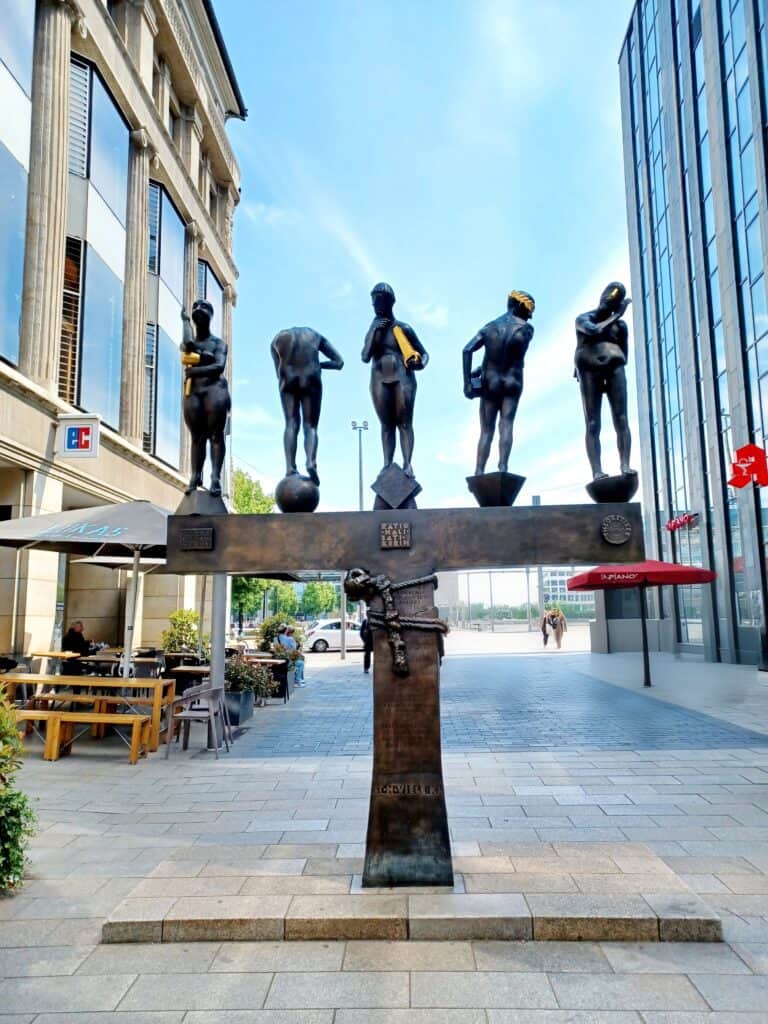
It’s a 1.9 meter (6.2 ft) square column, which is connected to a 2.9 meter (9.5 ft) cross-piece. That way, an average height adult cannot walk underneath the sculpture without hitting their head. It’s supposed to be a thought-provoking impulse.
The bronze statues are naked and each one balances on a different kind of shape. This is supposed to be a symbol for them being self involved at first. Besides, if you look closely on the vertical column, you can find 14 mottos, such as by German writers Johann Wolfgang von Goethe and Berthold Brecht.
Wander around Connewitz
Connewitz is Leipzig’s most alternative neighbourhood. It’s a popular spot for the Punk and squatter scene and left-wing politics. But don’t worry, Connewitz is a lively, colourful district full of art, culture, (vegan) restaurants, concert venues, cafés, bars, and nice people.
While walking around Connewitz, we stumbled upon a bunch of cool stores. We browsed through record stores, a fair trade store, secondhand stores, and No Borders, a punk/left-wing politics apparel store on Wolfgang-Heinze-Strasse.
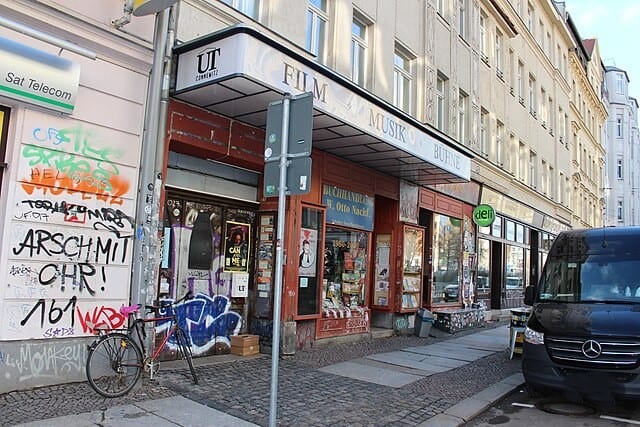
Then we had lunch at Shahia II, a small fast food bistro serving Döner Kebap, schnitzel, nuggets, and pizza dishes. They have lots of veggie options, such as the Vegan Döner with seitan! It was so yummy and sitting outside on their patio on this nice day was just another bonus.
We also saw a random vending machine for Daumenkinos (flipbooks), that we used to play with as kids in the 1990’s! 😀
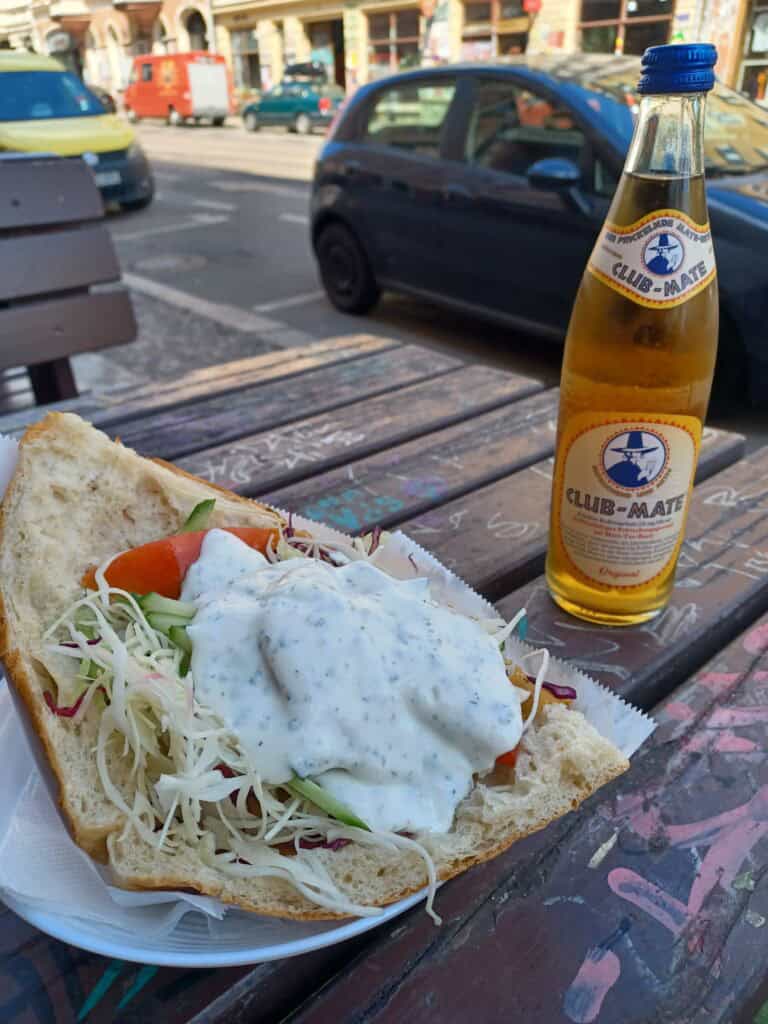
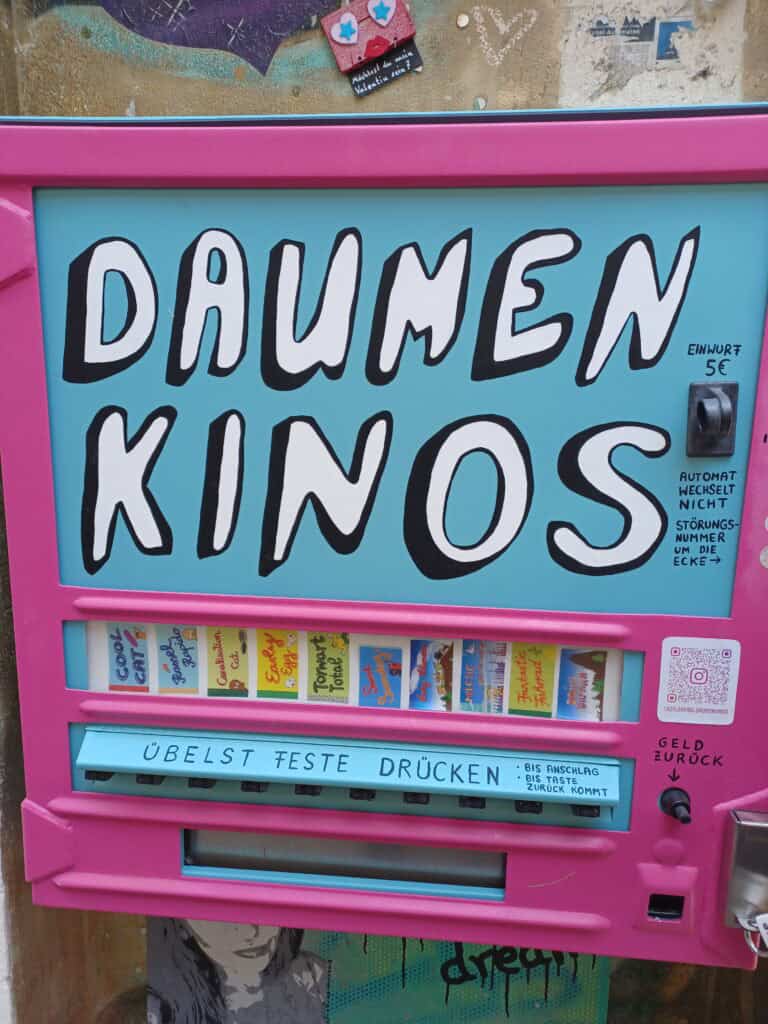
We also spotted colourful graffiti and (street) art pretty much everywhere in Connewitz. I think they match perfectly with the unique charm of this neighbourhood! We also met a friendly cat in the inner courtyard of ZORO (a concert venue)!
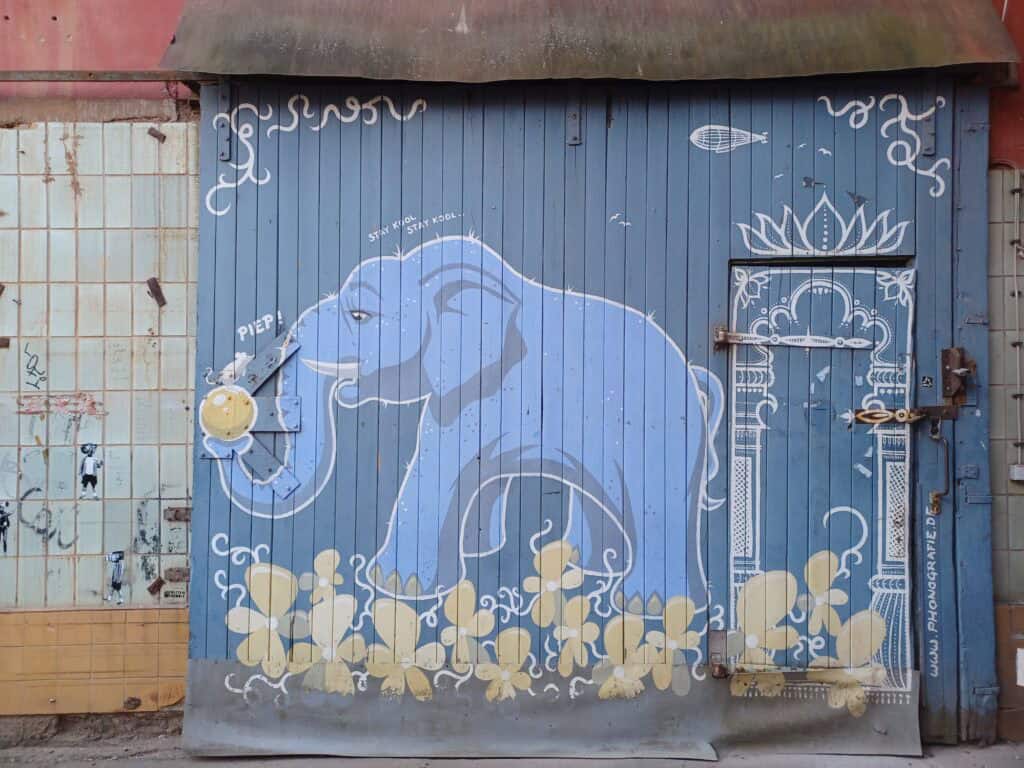


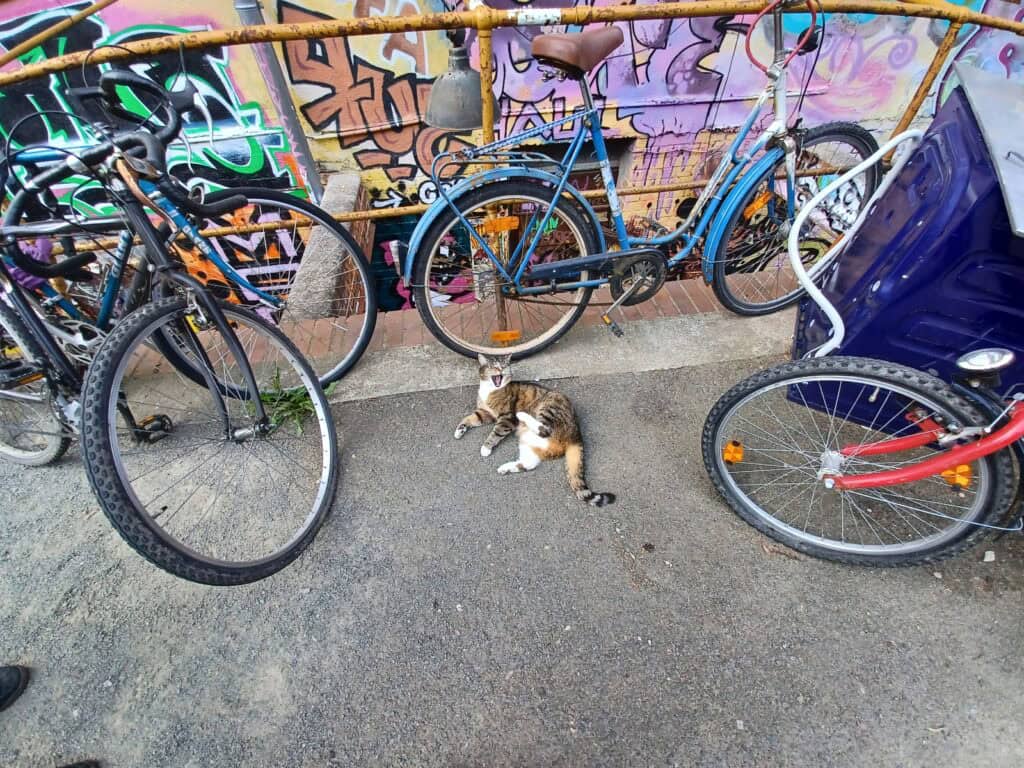
If you’re into punk concerts and left-wing events, check out Liwi and Manfreds on Stockartstrasse! Or chill at Herderpark for a bit, which also has a large playground if you’re traveling with kids. 🙂
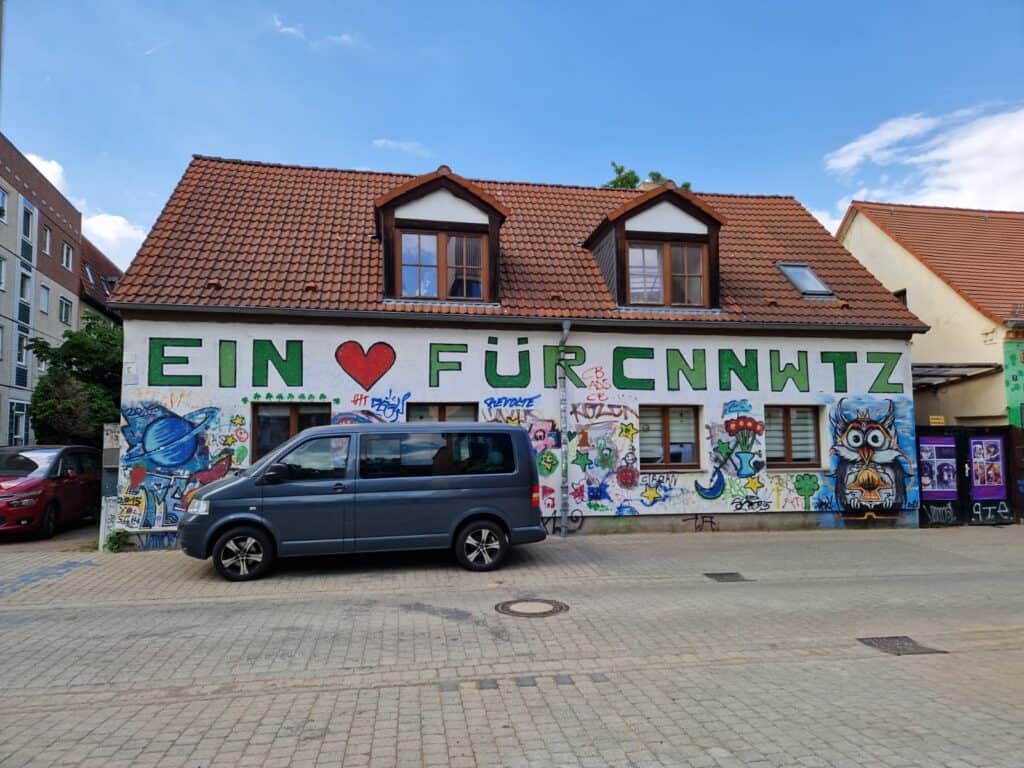
Visit the Altes & Neues Rathaus
Altes Rathaus (Old Town Hall)
Address: Markt 1, 04109 Leipzig, Germany
The stunning Altes Rathaus in Leipzig’s city centre sits on the historic Markt (Market Square) and was built in 1556 and 1557 by Hieronymus Lotte. It’s one of the best examples of Renaissance architecture in Germany.
Besides, it’s decorated with gables, mullioned windows, and a tower which slightly leans to the left side.
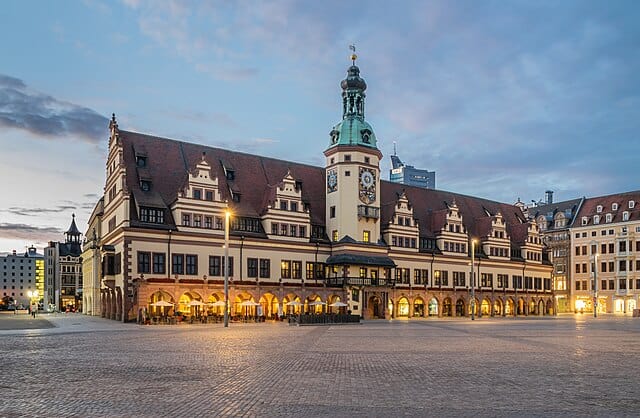
The Leipzig city administration worked here until the early 20th century and since 1909 it’s been the home of the Stadtgeschichtliches Museum (City History Museum).
Attractions of the museum include the inside of the Altes Rathaus, a dungeon, old jail cells, and an exhibit of Leipzig’s 1,000-year history from the Middles Ages until the present day. The City History Museum is open Tuesday-Sunday and holidays from 10 am to 6 pm (except December 24 and 31). Admission is free.
Neues Rathaus (New Town Hall)
Address: Martin-Luther-Ring 4, 04109 Leipzig, Germany
In 1905, Leipzig’s city administration moved from the Altes Rathaus to the newly built Neues Rathaus, because the former spot had become too small for the growing city. Thanks to its irregular pentagon shape, it looks more like a fortress than a town hall.
The Neues Rathaus was built in the style of historicism and its main tower is with 114.8 meters (376 ft) the highest city hall tower in Germany. The Pleissenburg Castle stood at this spot from the 13th century until it was demolished in 1897.
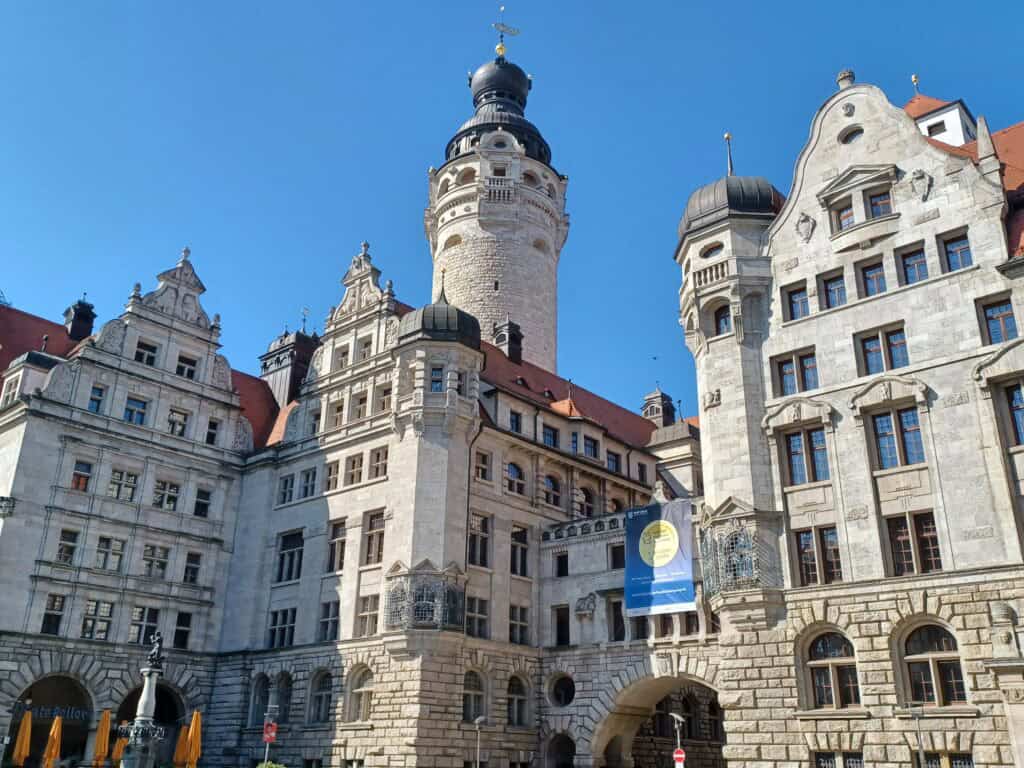
Besides, many people committed suicide by jumping down the tower at the end of the Third Reich.
From Monday to Friday at 2 pm, visitors can walk up the 250 stairs to the city hall tower, which offers a great view of Leipzig. Besides, on Sundays at 10:30 am, you can join a guided tour around the Neues Rathaus that includes going up the stairs to the tower and a visit of the casemates. These are 8 meters (26 ft) below the castle square.
Thomaskirche (St. Thomas Church)
Address: Thomaskirchhof 18, 04109 Leipzig, Germany
The impressive Thomaskirche has been a part of Leipzig’s city centre since the 13th century. Several celebrities have been in this Gothic church over time. For example, Martin Luther preached a sermon here in 1539 and Wolfgang Amadeus Mozart played the organ at Thomaskirche in 1789.
Besides, Johann Sebastian Bach was the cantor (music director) of the Thomanerchor from 1723 until 1750. It’s an internationally known boys’ choir that was founded in 1212. To honour Bach for his hard work of so many years, it was decided to make Thomaskirche his burial place. There’s also a Bach statue in front of Thomaskirche.
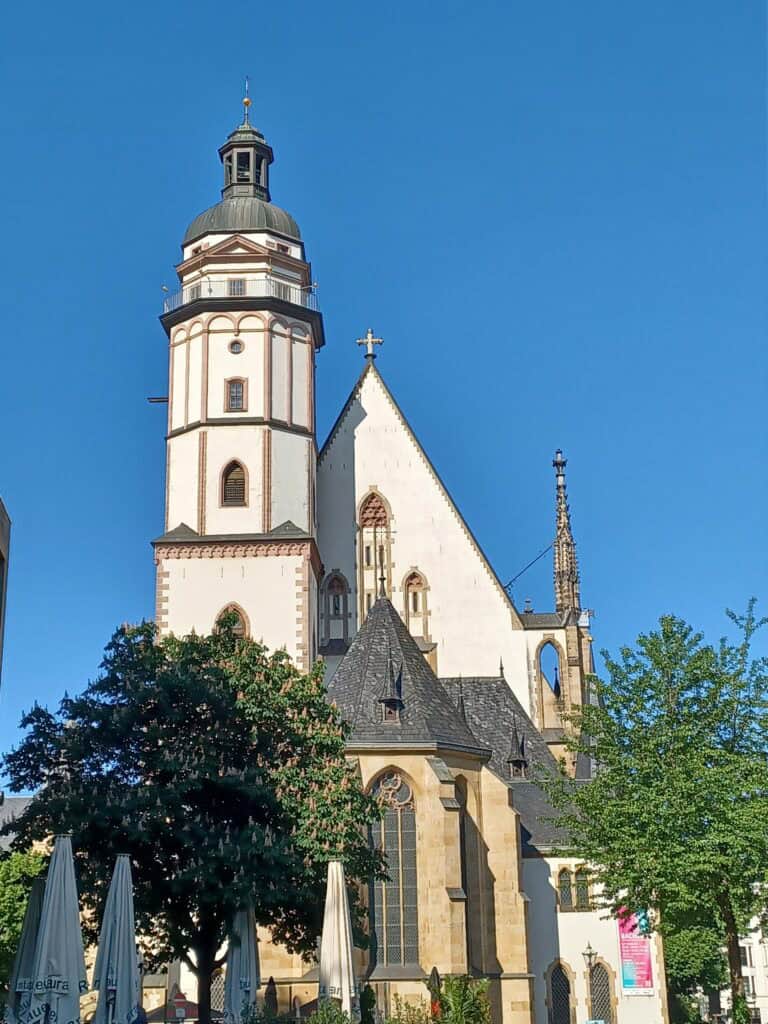

Today Visitors can listen to the Thomanerchor on Fridays, Saturdays, and Sundays. You can also book a tour of the Baroque tower (completed in 1702) from April to November. Thomaskirche is open daily from 9 am to 6 pm.
The Bach Museum
Address: Thomaskirchhof 15/16, 04109 Leipzig, Germany
As you can probably tell by now, Johann Sebastian Bach was an important Leipzig resident! So it’s no surprise that the Bach Museum across from Thomaskirche opened to celebrate his life and work.
There’s a lot of things to see and do at the Bach Museum. For example, visitors can look at Bach’s original manuscripts and listen to a rehearsal of the St. Matthew Passion. Besides, check out the interactive composer’s room or the virtual orchestra to feel like a real composer!
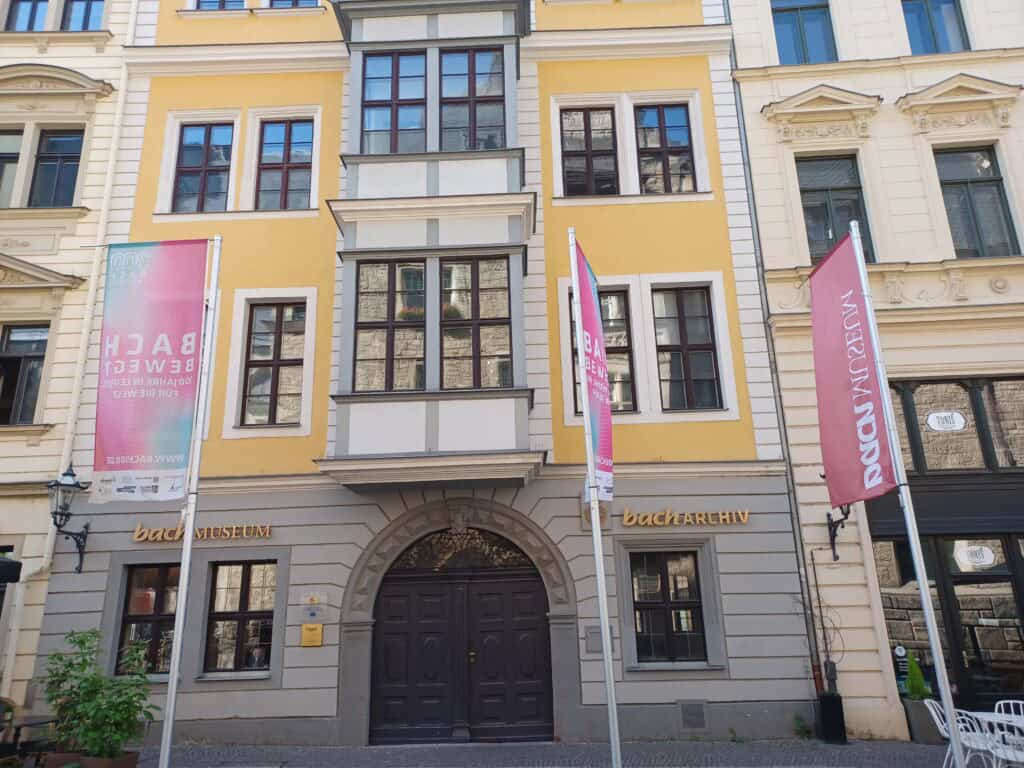
Or listen to stories about Johann Sebastian Bach by 33 women in his family – from his mother to great-granddaughters! Visitors can download a free app to guide them around the museum, which is available in 11 languages. It’s also accessible for handicapped guests.
The Bach Museum is open Tuesdays to Sundays from 10 am to 6 pm and admission is 10 EUR. There’s also a café next door.
Völkerschlachtdenkmal
The Völkerschlachtdenkmal (Monument to the Battle of the Nations) was put up in 1913 to remember the historic Battle of Leipzig (also known as Battle of the Nations) from October 1813.
After many fights, Napoleon’s French troops were defeated right here, which slowly led to the end of the Napoleonic rule. But more than 90,000 soldiers lost their lives, which makes it one of the deadliest battles from this time.

Besides, it was used as a battlefield in World War II, when Nazi forces in Leipzig stood up to U.S. troops (and lost) in 1945. There’s an exhibit at the Völkerschlachtdenkmal’s Hall of Fame from April 13 to June 29, 2025, to commemorate the battle that happened here 80 years ago.
The Völkerschlachtdenkmal is 91 meters (299 ft) high and more than 500 steps take you to a viewing platform at the top. It offers a great view of Leipzig and its surrounding areas. There’s an elevator as well. It was built out of concrete and granite and is lit up at night!
The Völkerschlachtdenkmal is open daily from 10 am to 6 pm (April to October) and 10 am to 4 pm from November to March (closed on December 24 and December 31). Admission is 10 EUR.
Shop ’til you Drop in Leipzig’s City Centre
Last but not least, Leipzig’s city centre is a great spot for shopping! Several streets are for pedestrians only and there are stores for every taste. For example, we browsed through chains stores like Lush, dm Drogeriemarkt, antiquarian bookstores, and the EMP store, which sells goth/punk/metal clothing.
Leipzig’s Hauptbahnhof (Central Station) features 142 stores on three floors, and some are open on Sundays, too. We also walked around the Höfe am Brühl shopping mall, which has more than 130 stores, such as H&M, Zara, pharmacies, Intersport, Reno (shoe store), and more!
Conclusion: 9 Reasons to Visit Leipzig, Germany for a Day
If you’re traveling around East Germany, Leipzig should be on your must-see list! It offers a great mix of culture, GDR history, architecture, music (both old and modern, lol), great food, and a laid back vibe!
While it’s not as popular with tourists as Berlin or Munich, Leipzig doesn’t need to hide at all. It’s cheaper as well and the restaurant and bar scene is just as awesome, according to my friends who live in this region.
My favourite things to do in Leipzig are exploring Connewitz (it’s just so different than the rest of the city!), but also learning about Nikolaikirche’s important role during the Monday Demonstrations. The Bild zur Deutschen Einheit was super impressive as well.
If you know any more reasons to visit Leipzig, feel free to share them in the comments. Danke 😀
Traveling around Germany for a while? Then check out these posts:
One Day in Heidelberg, Germany Itinerary: The Best Things to Do

